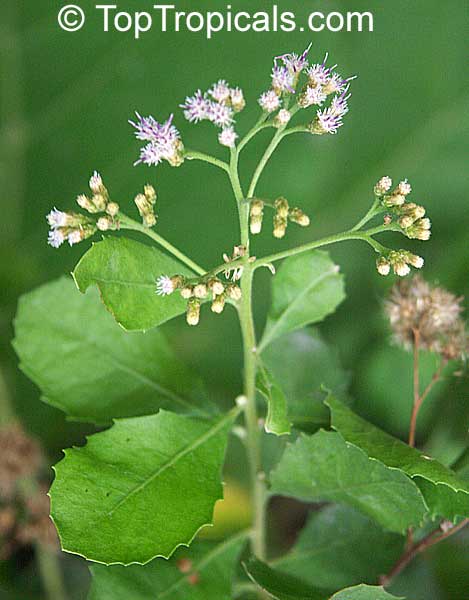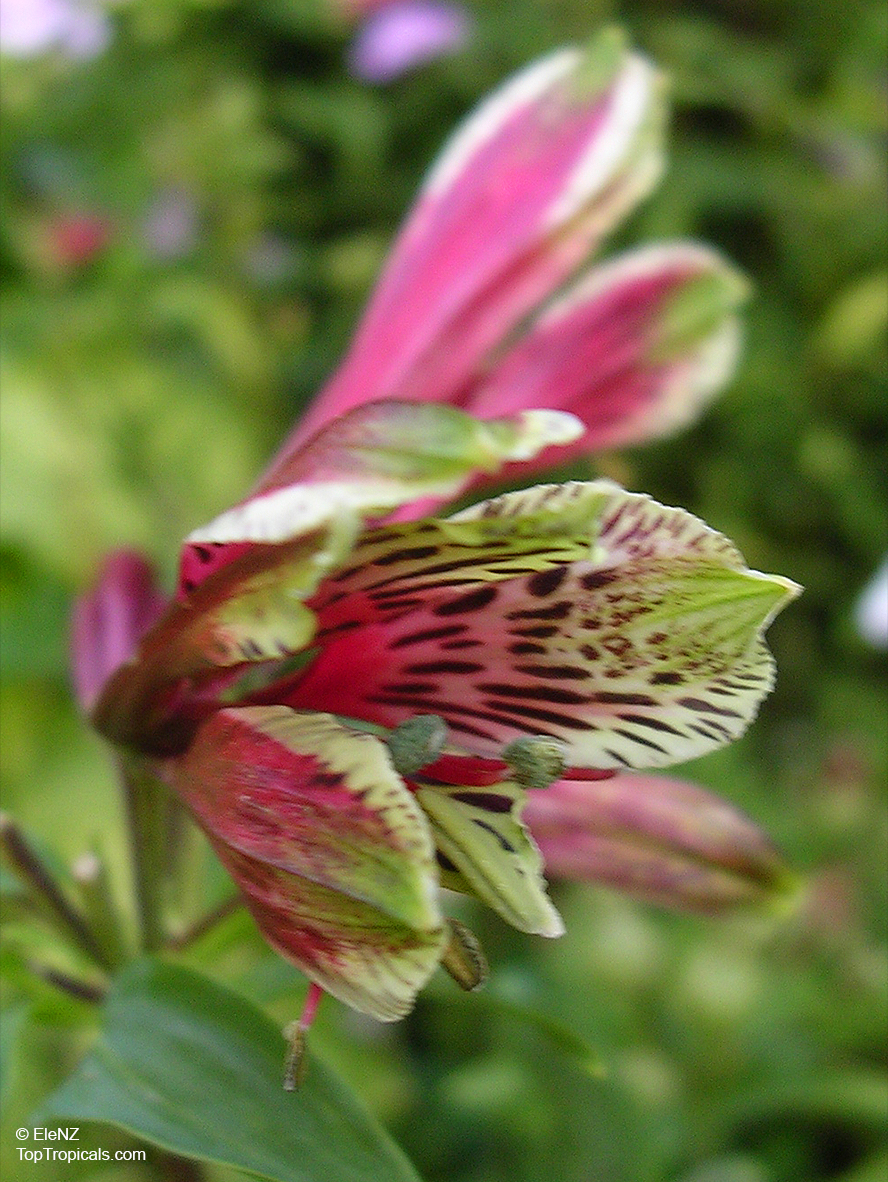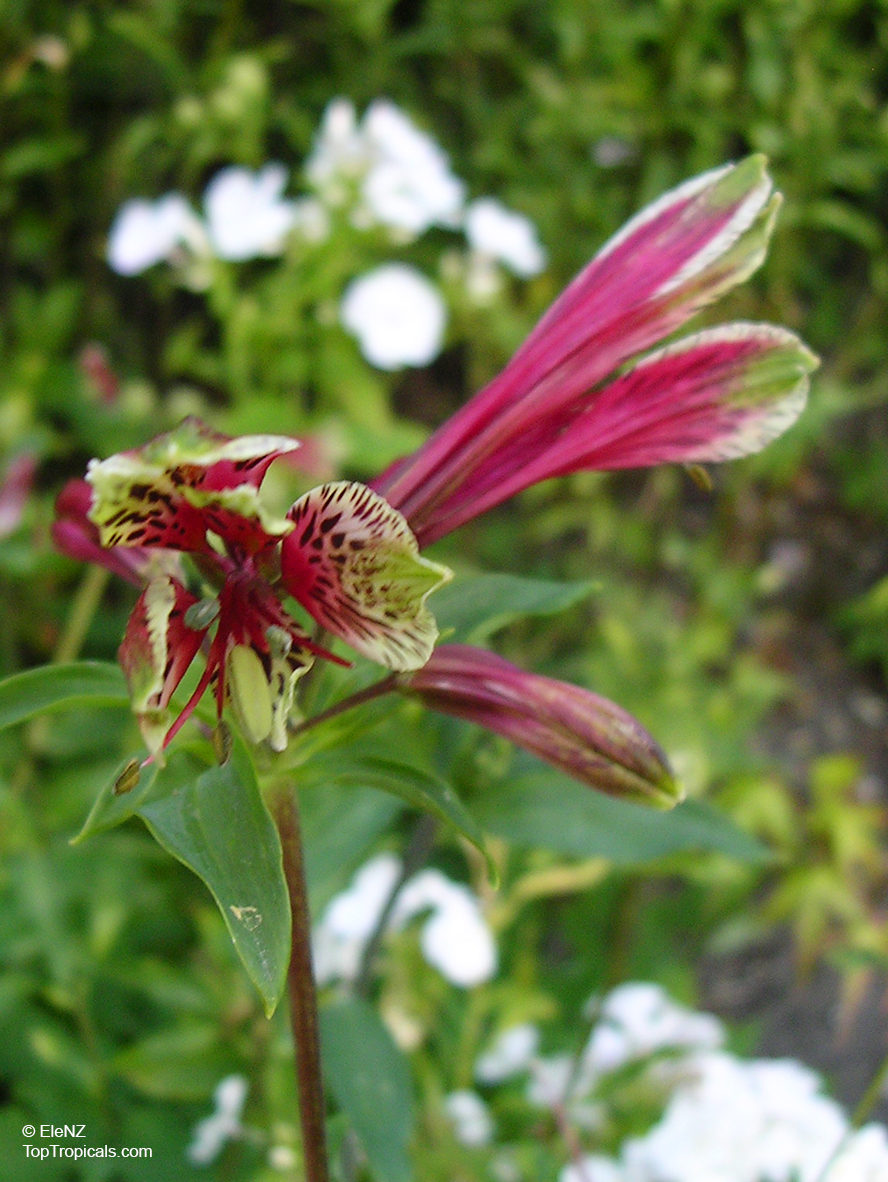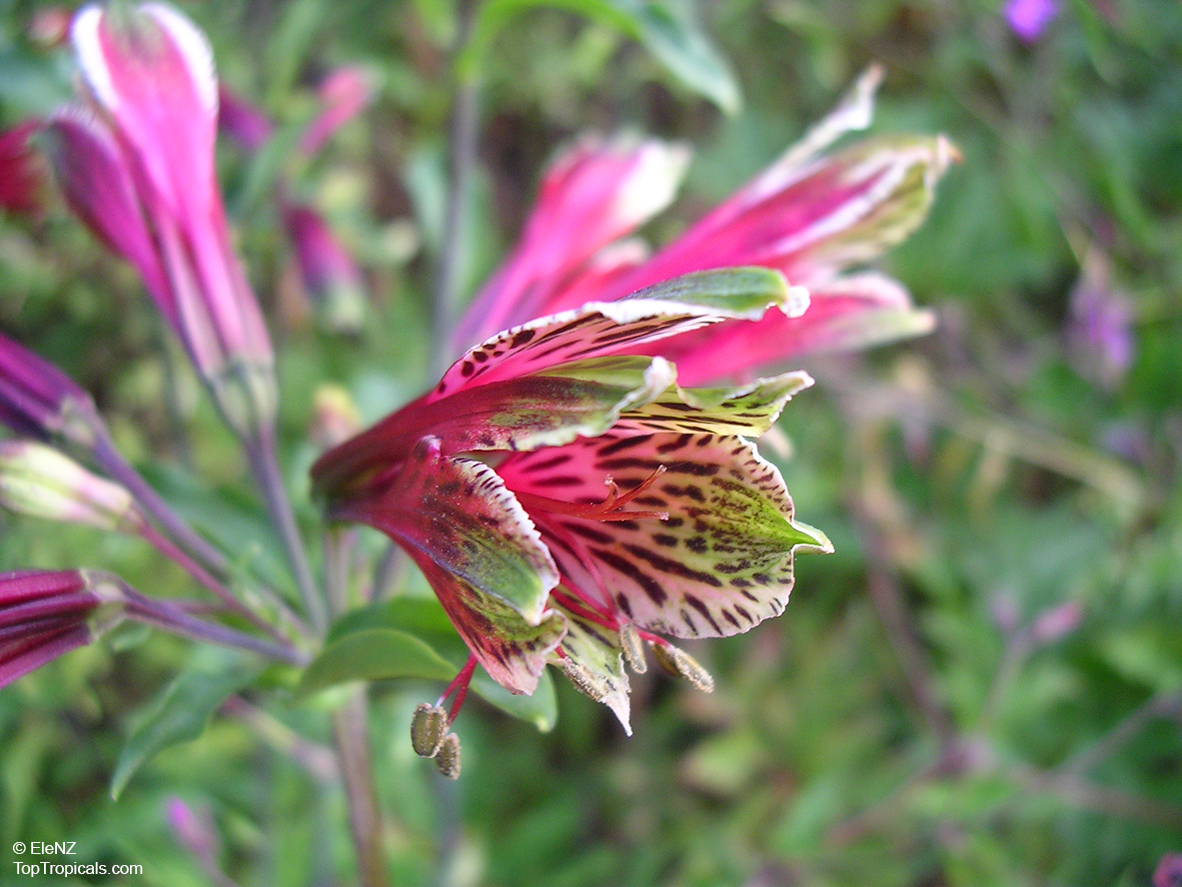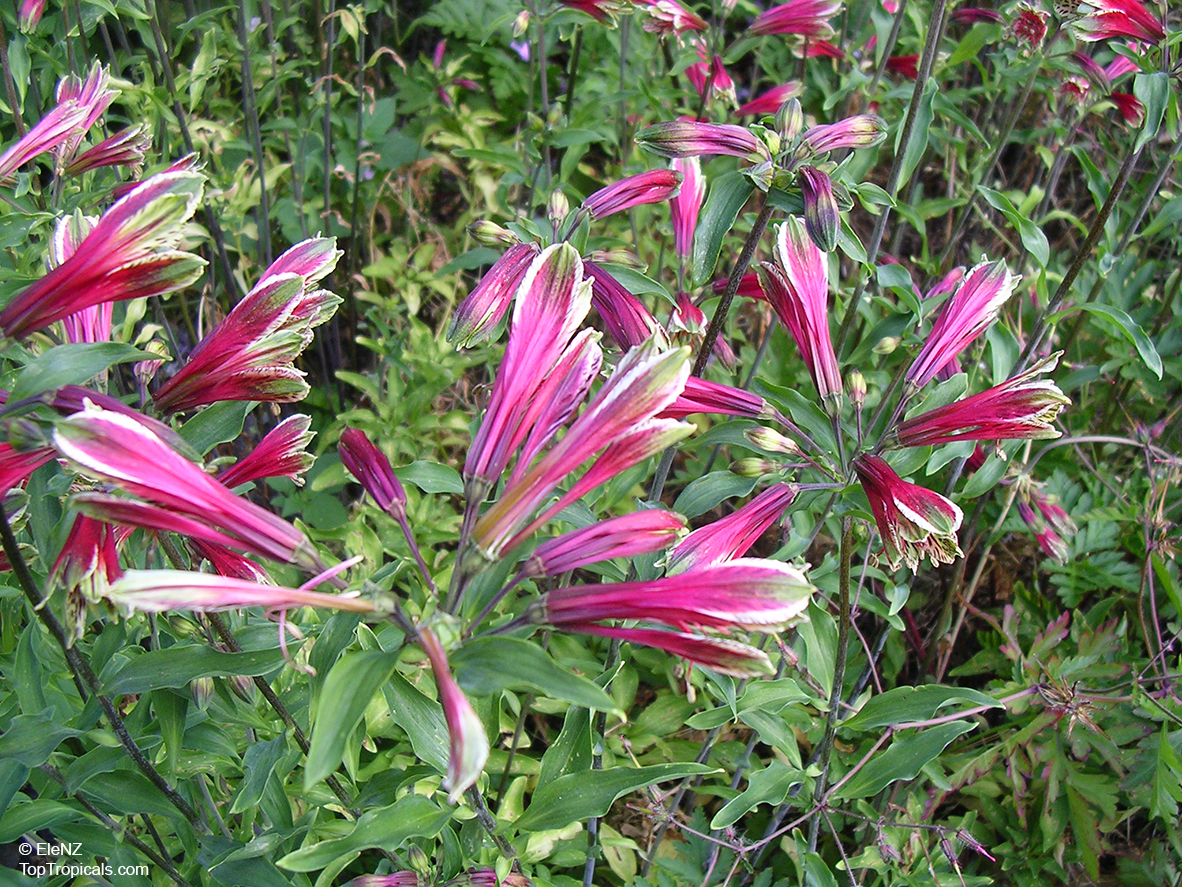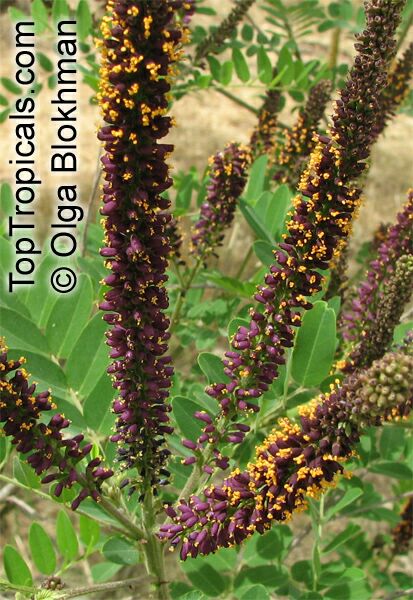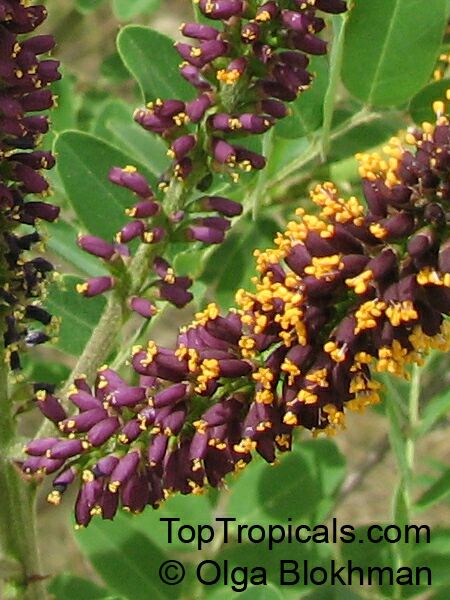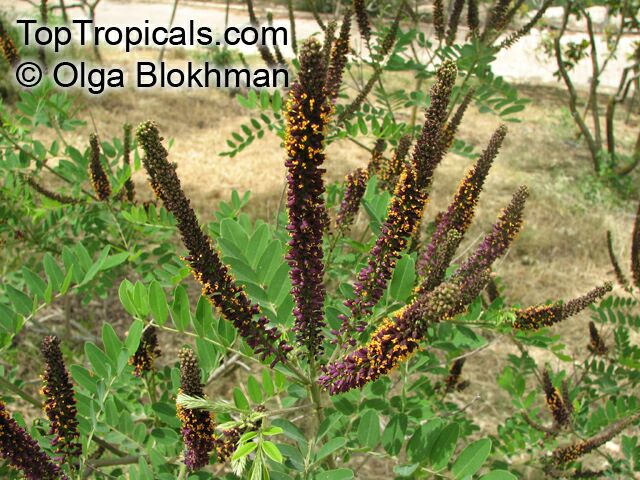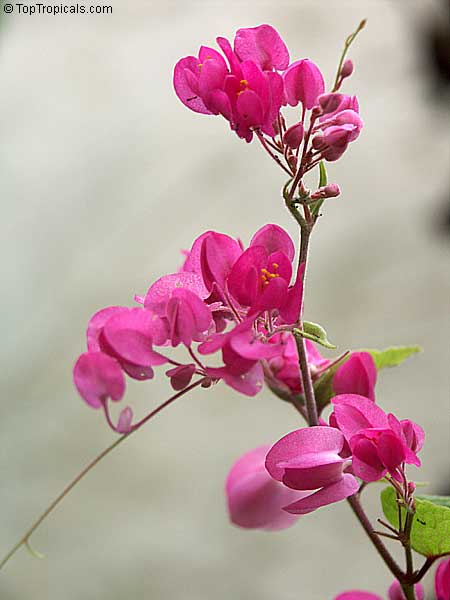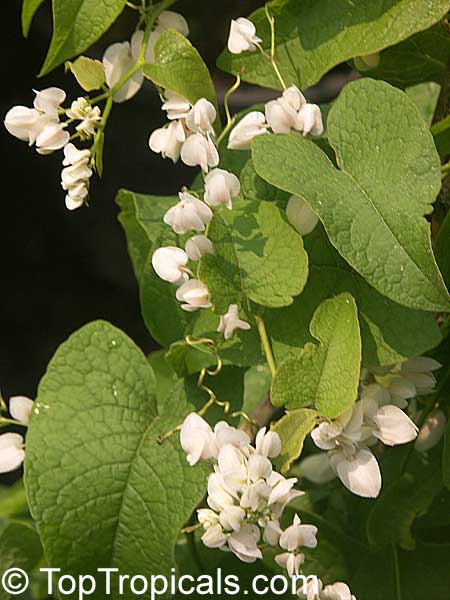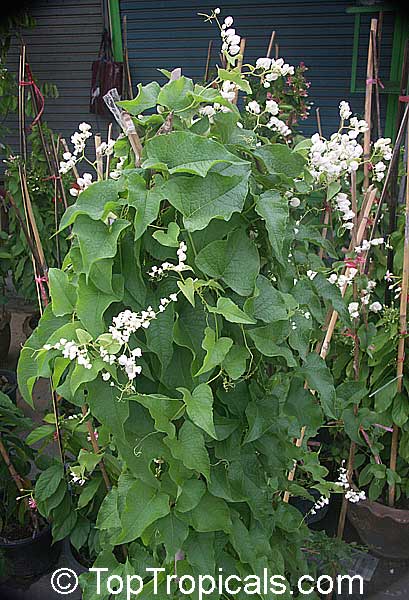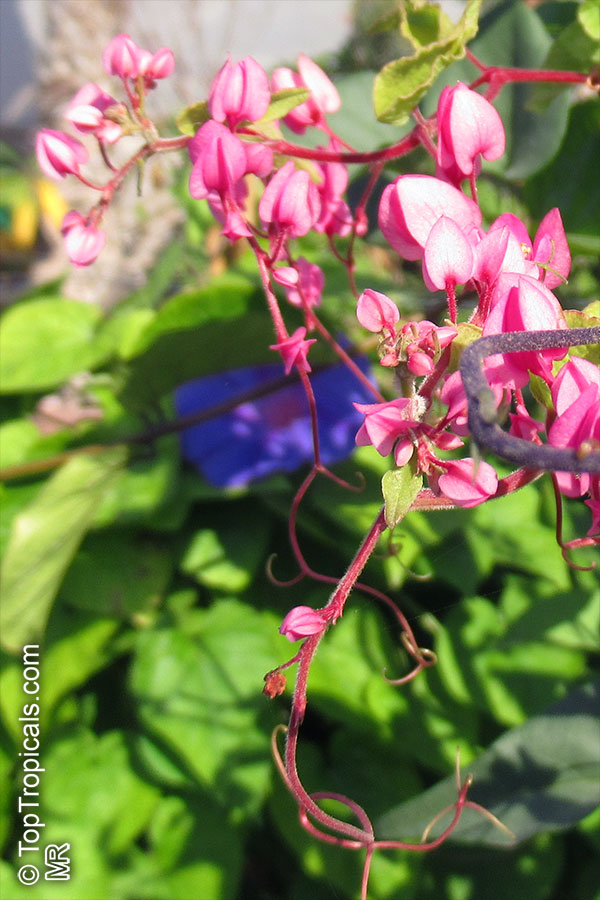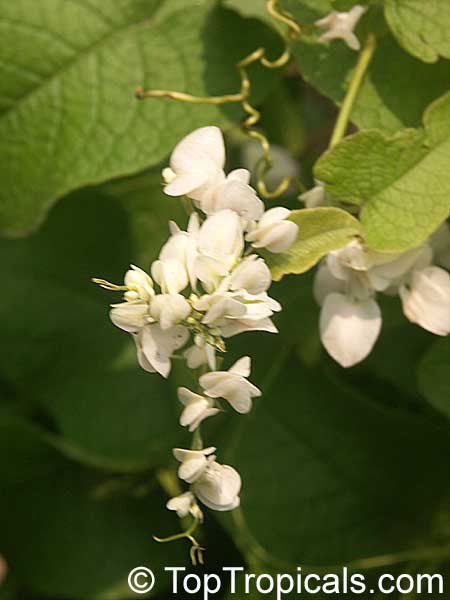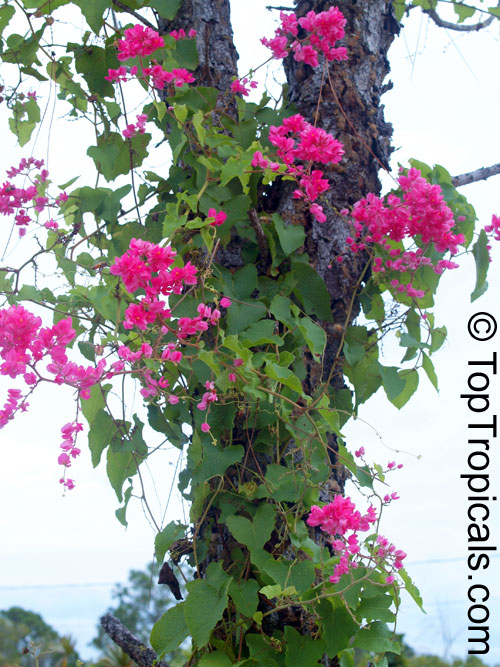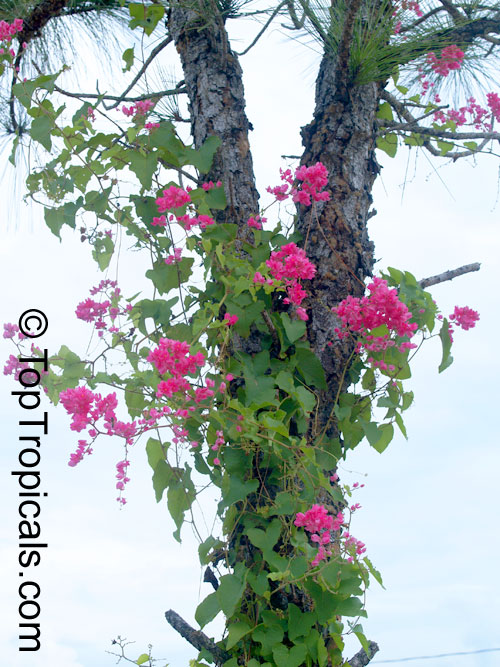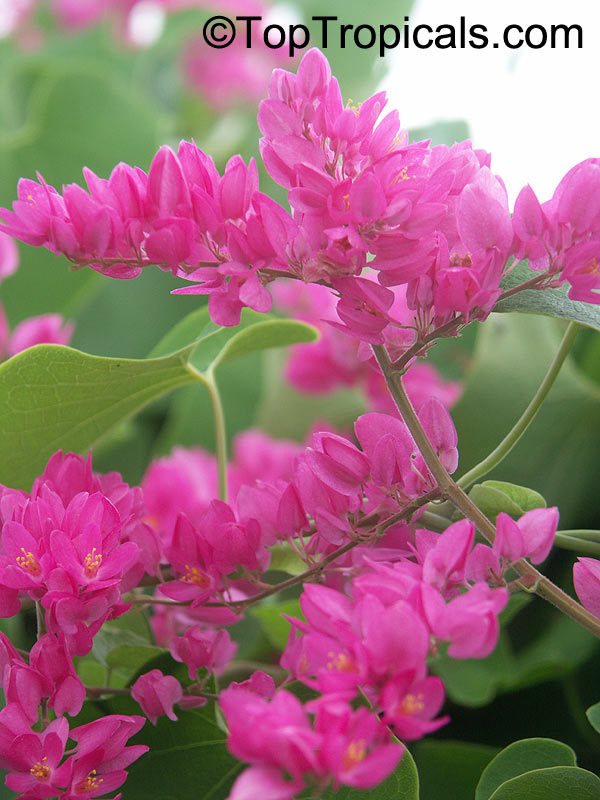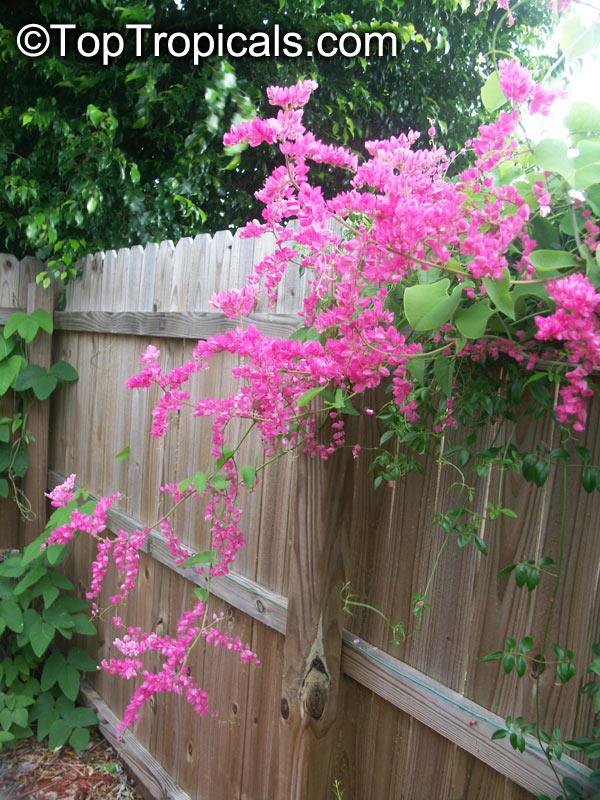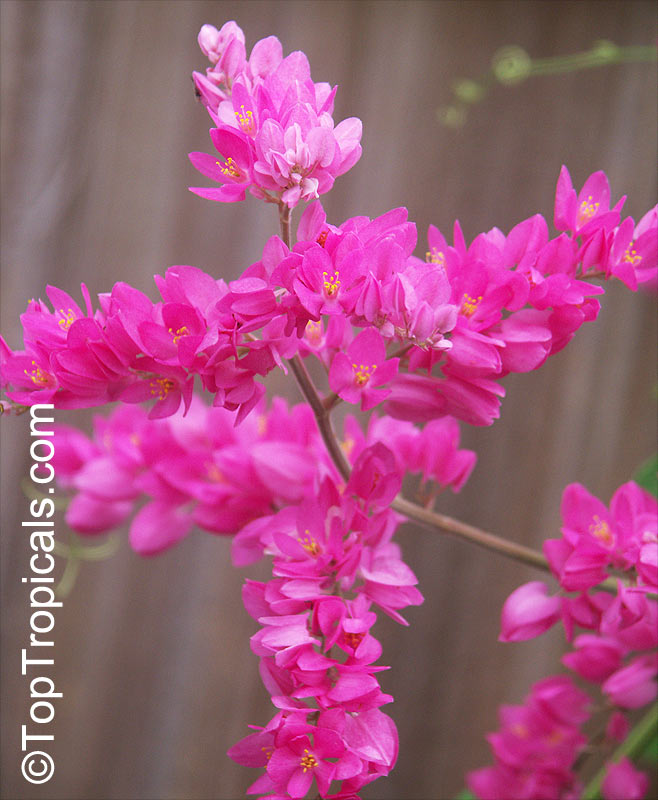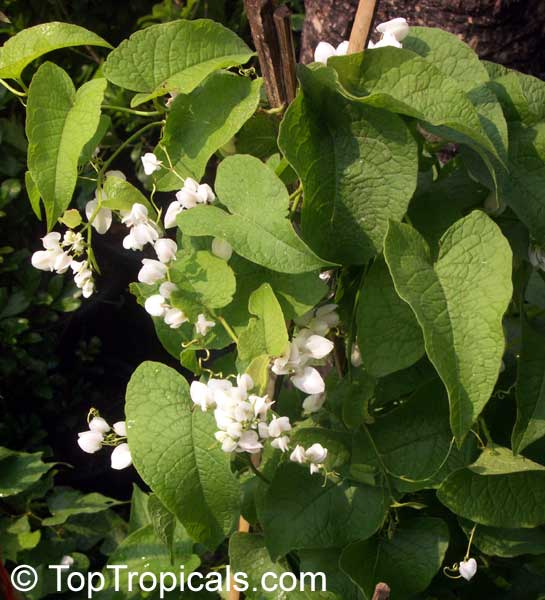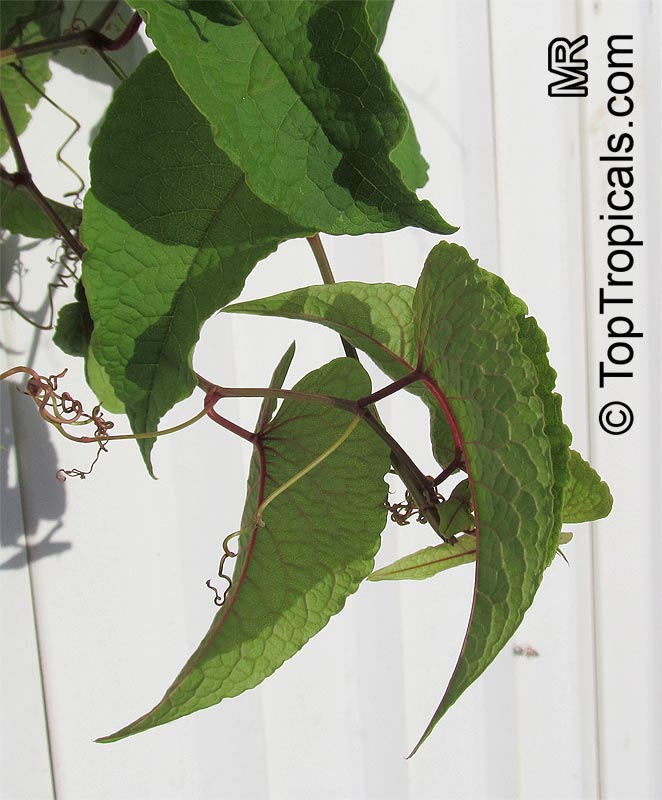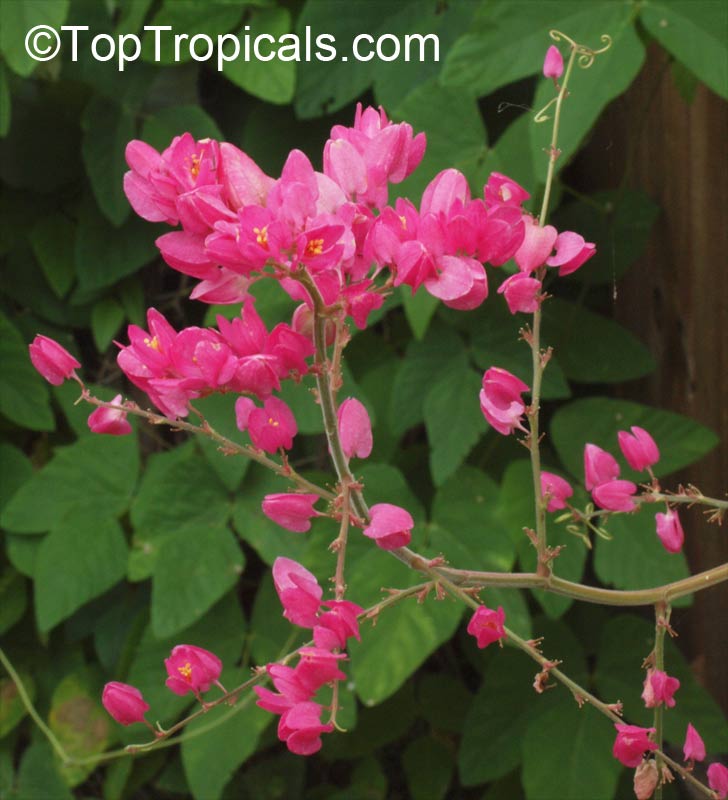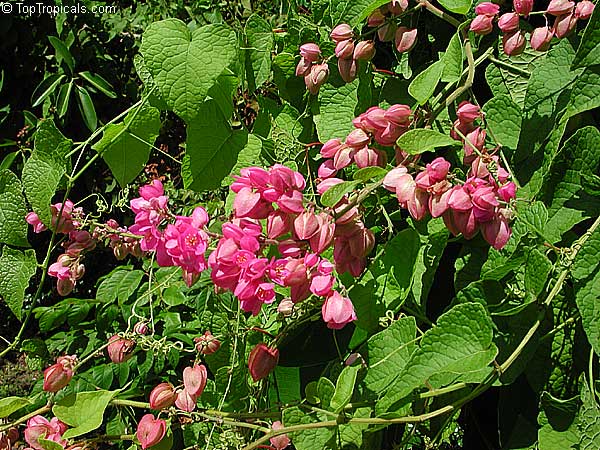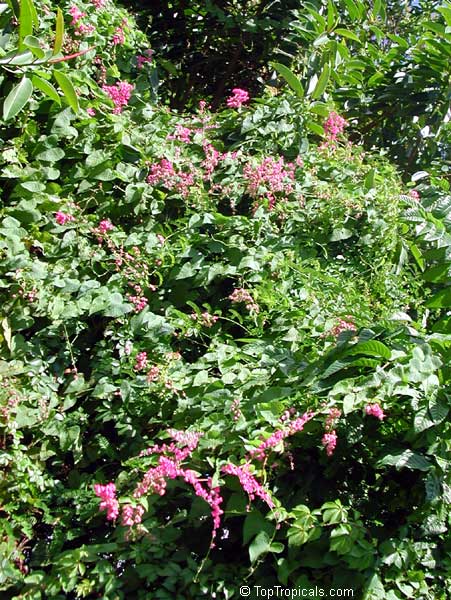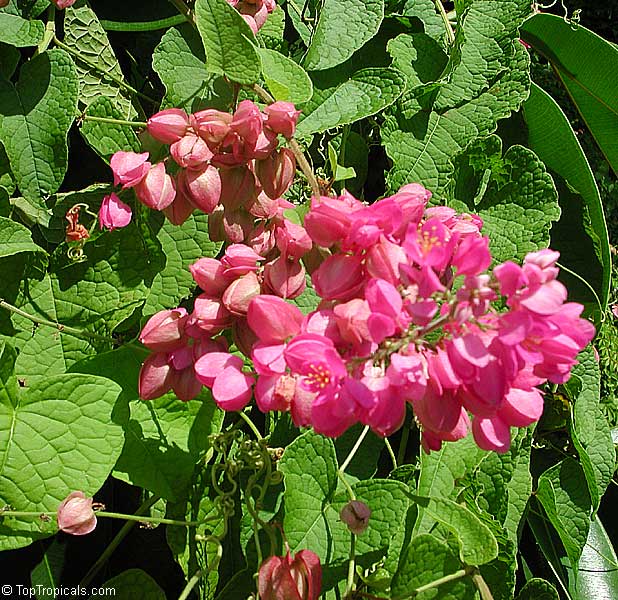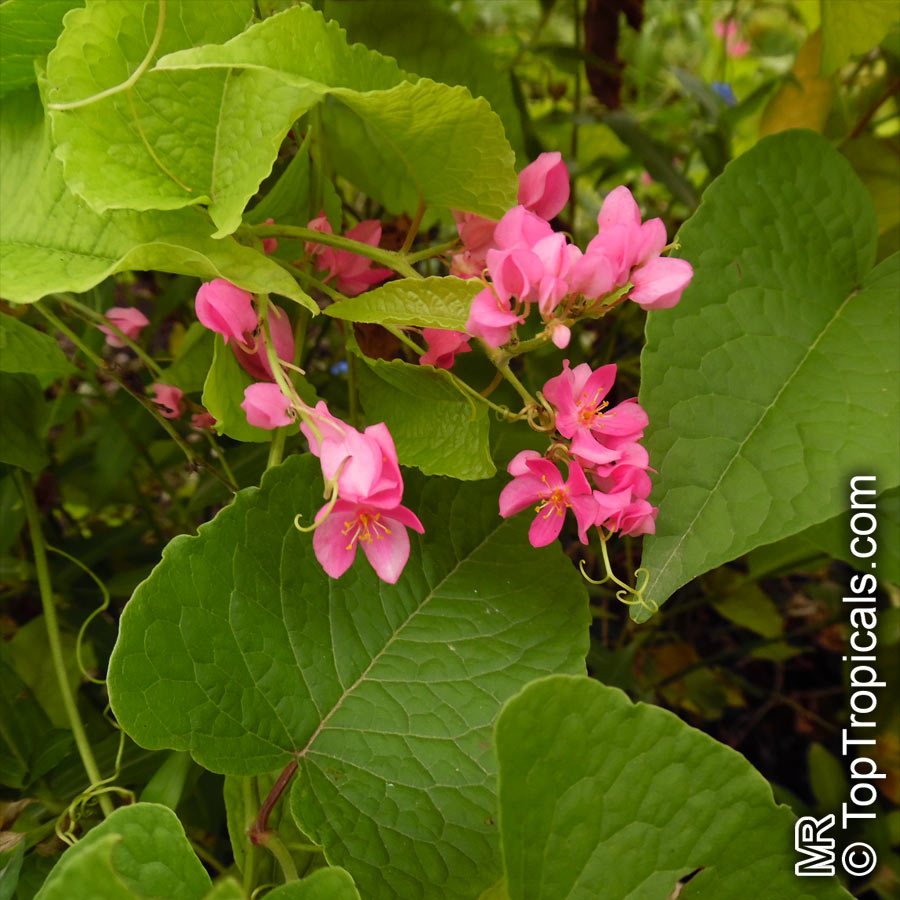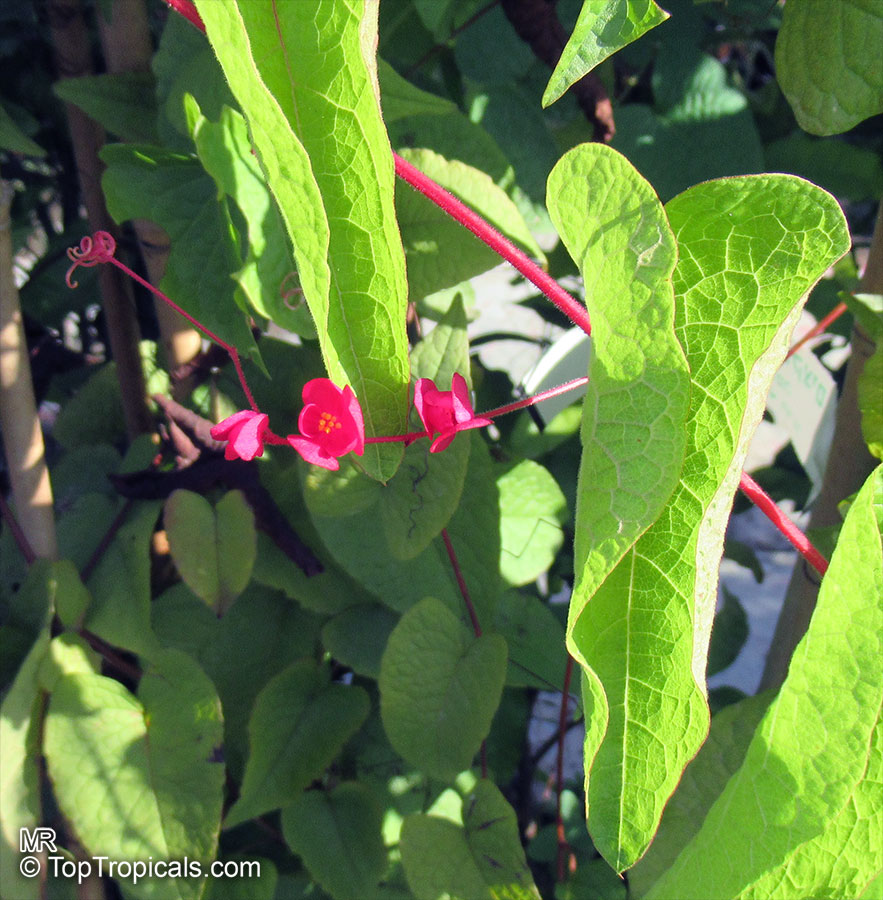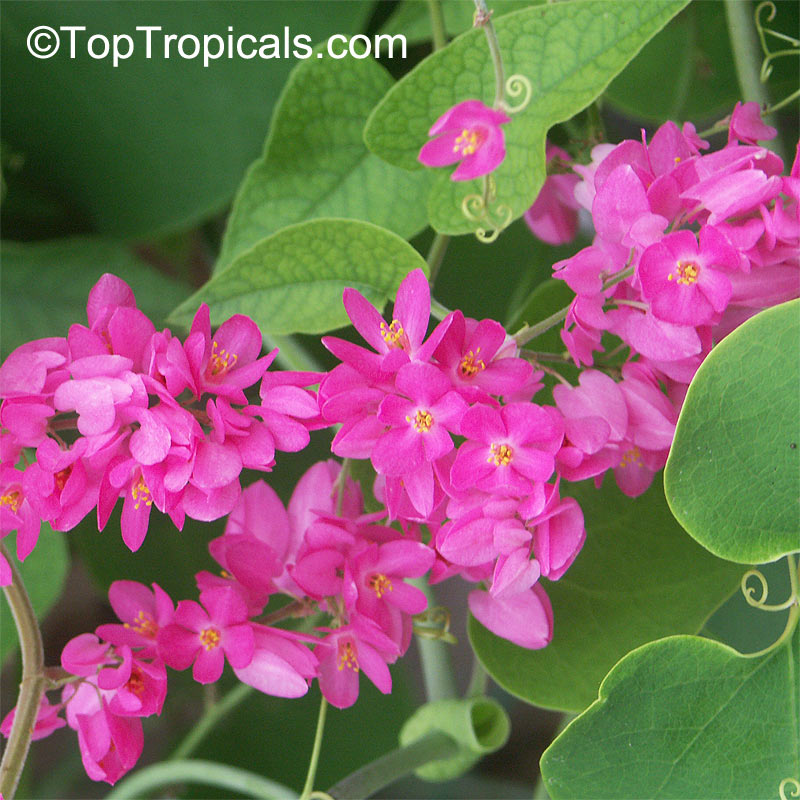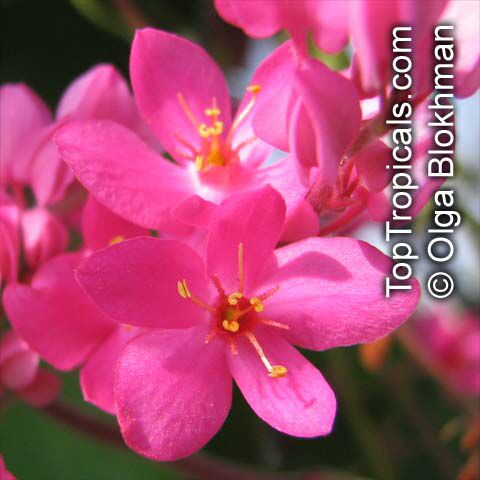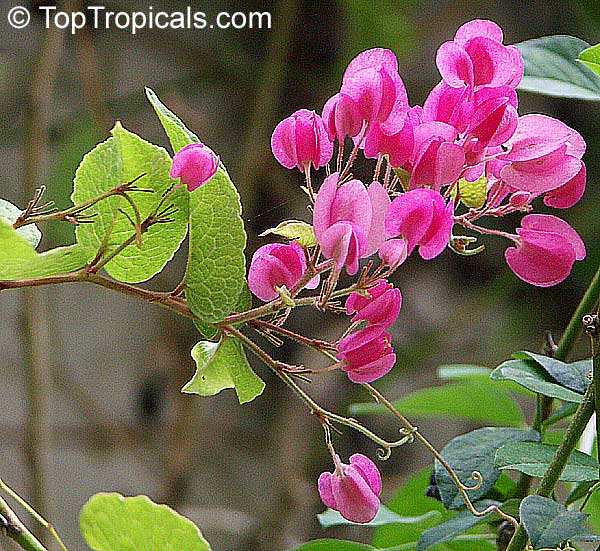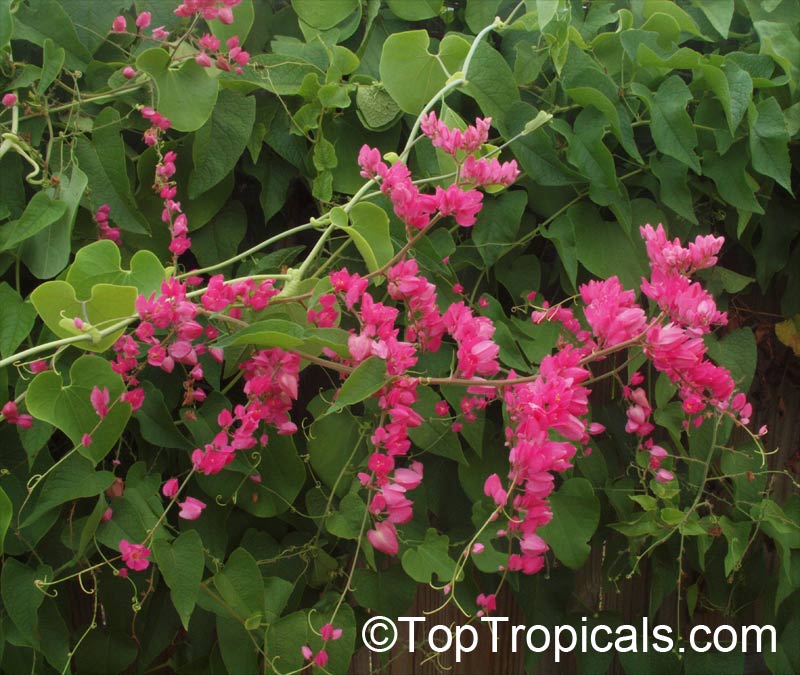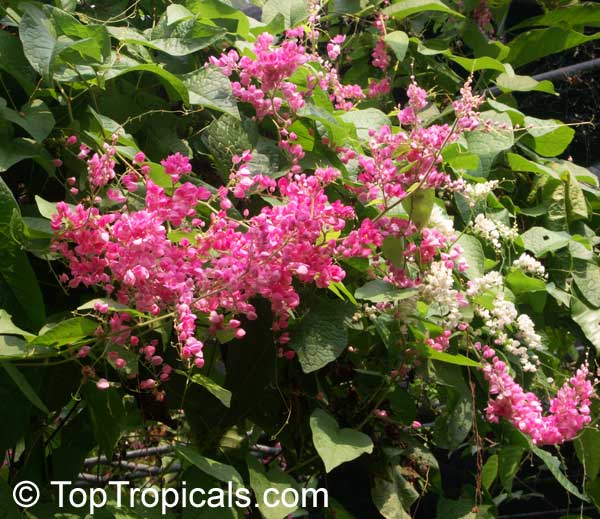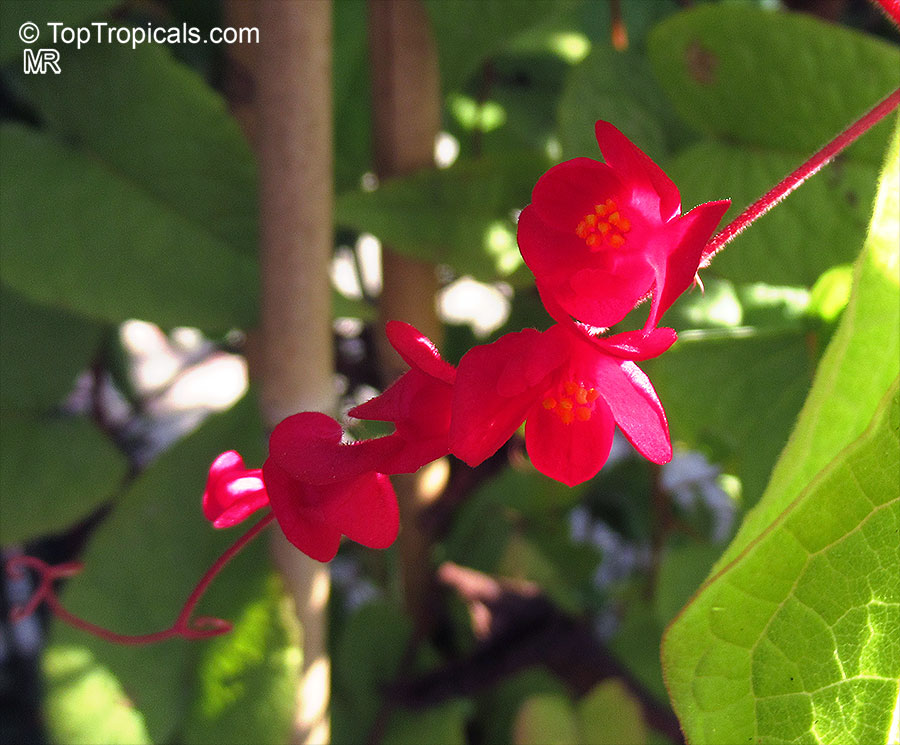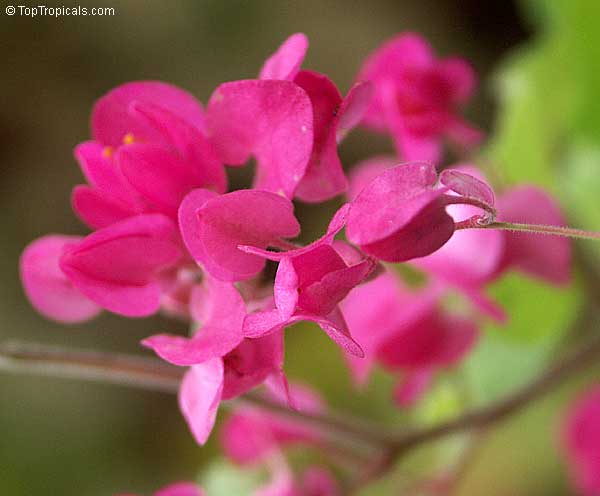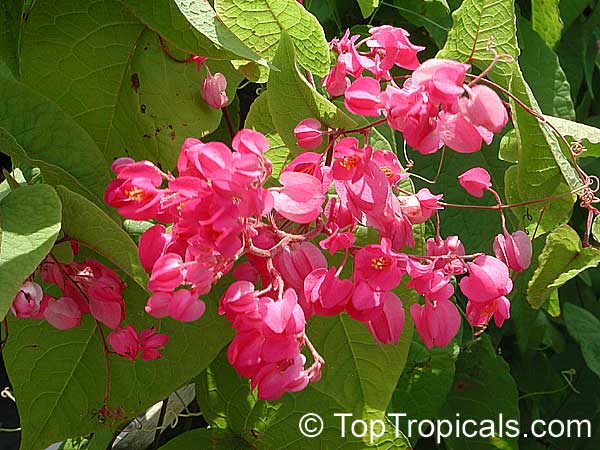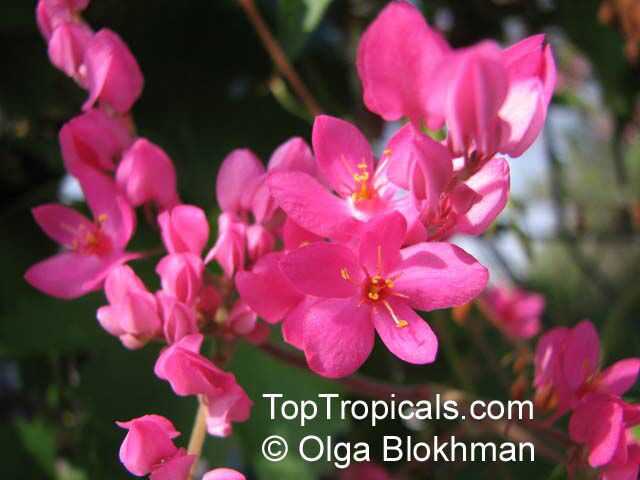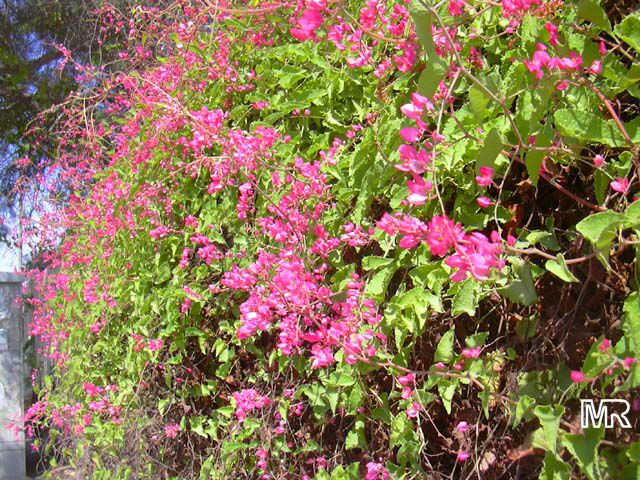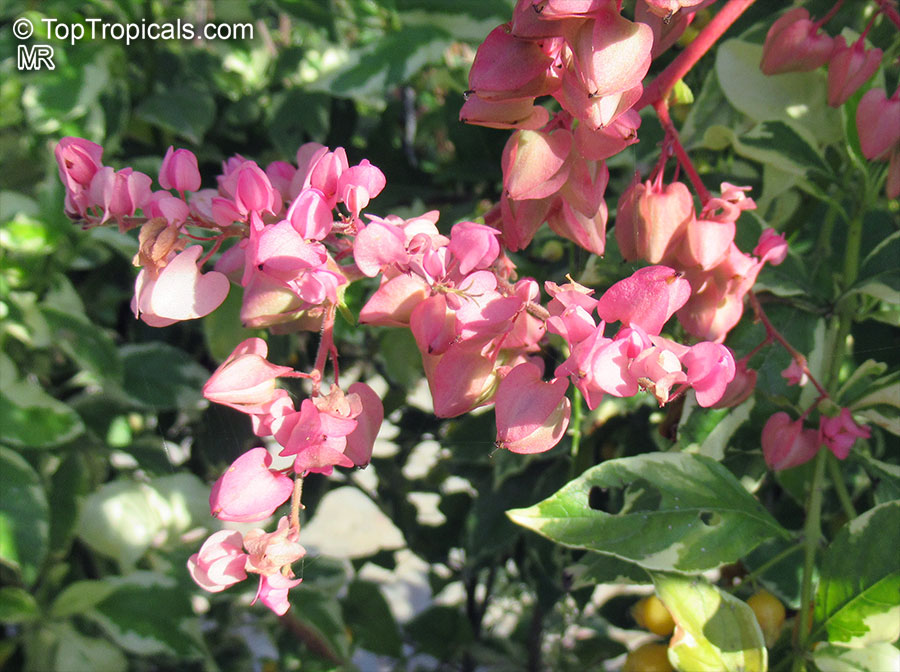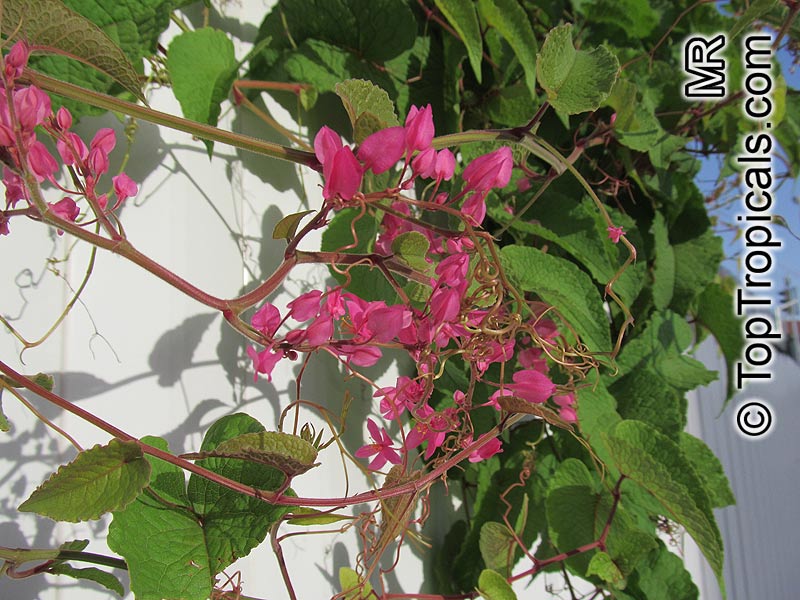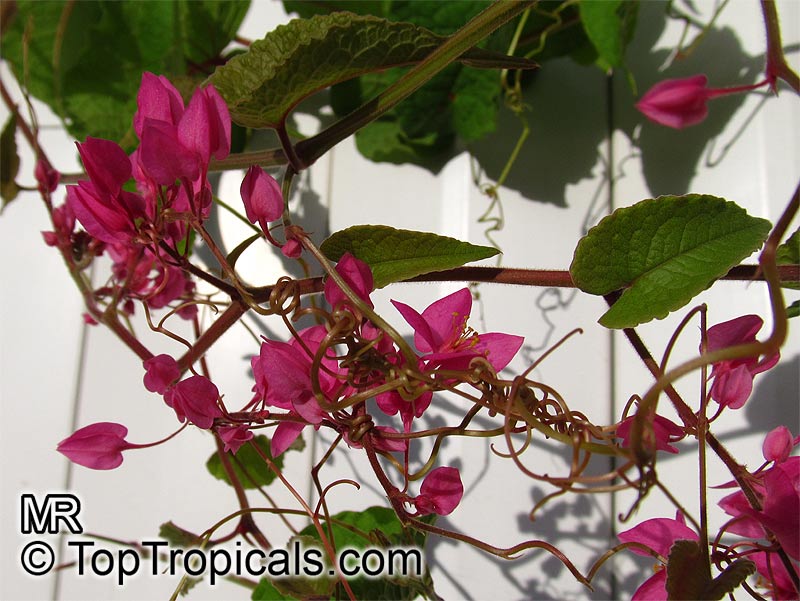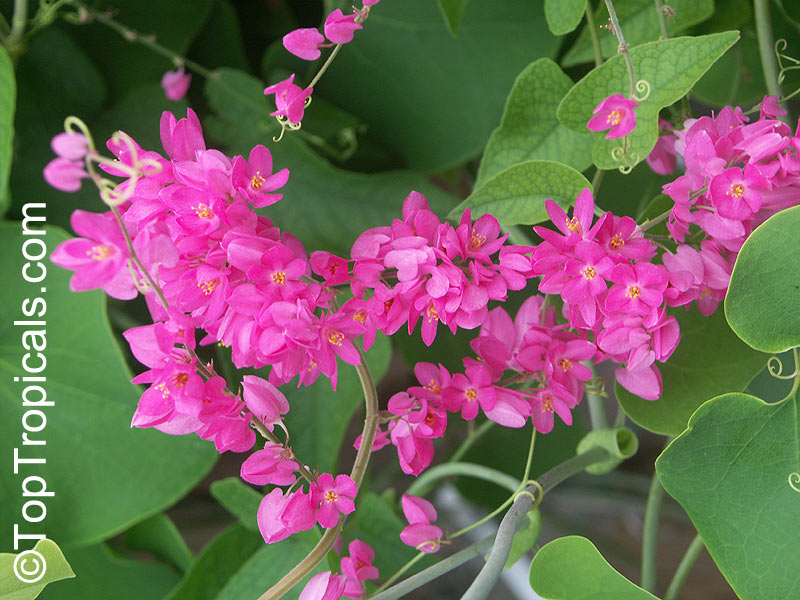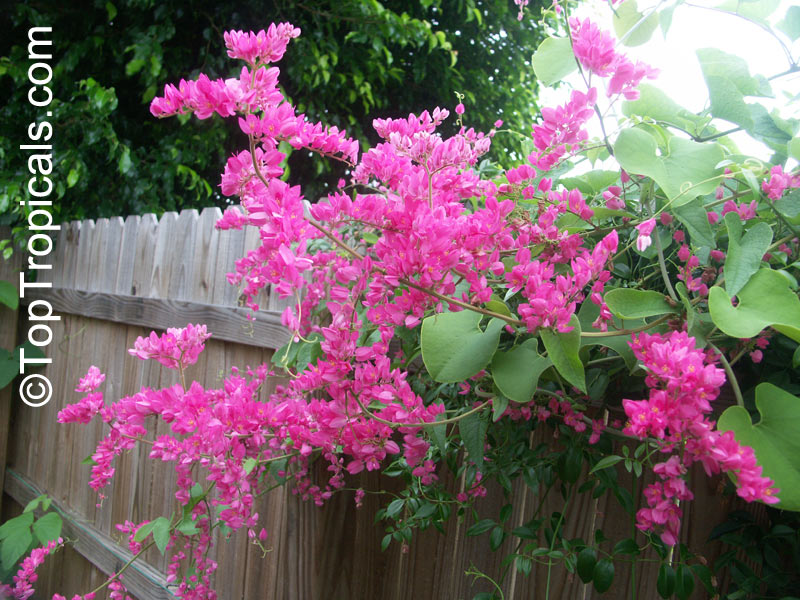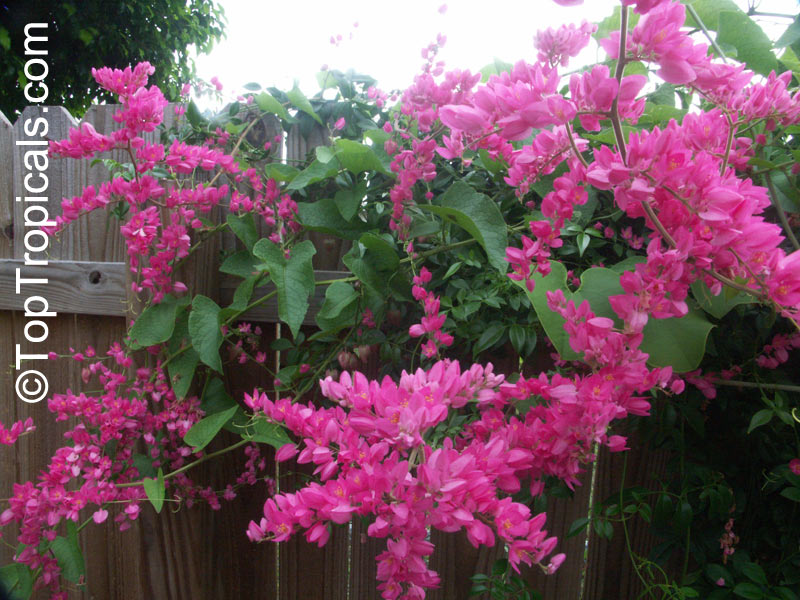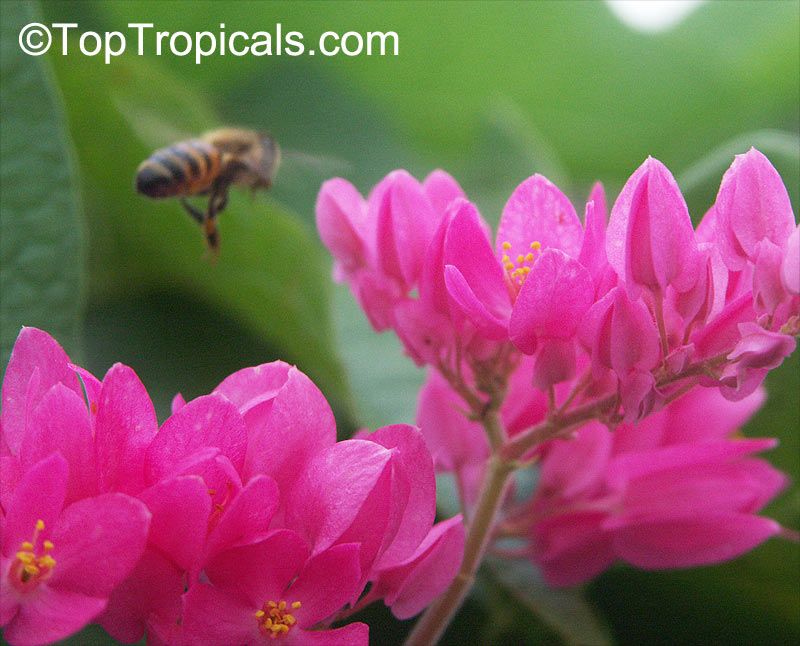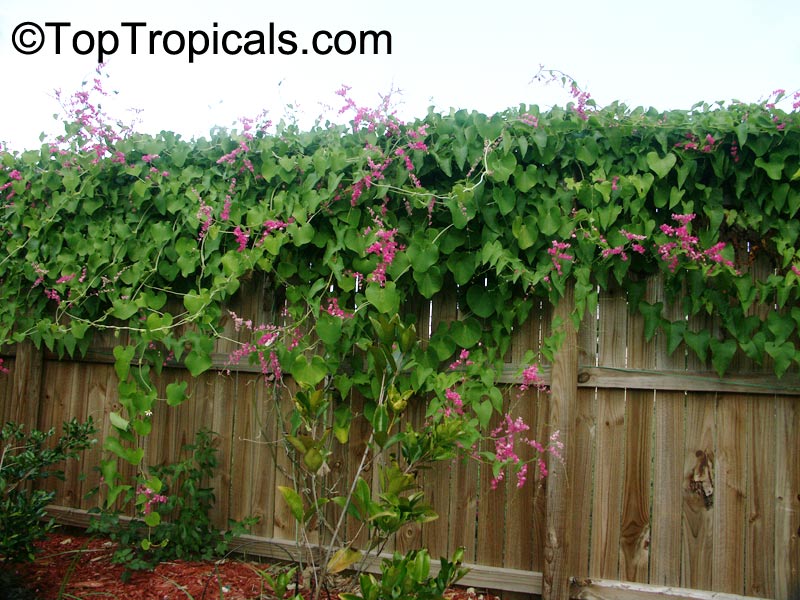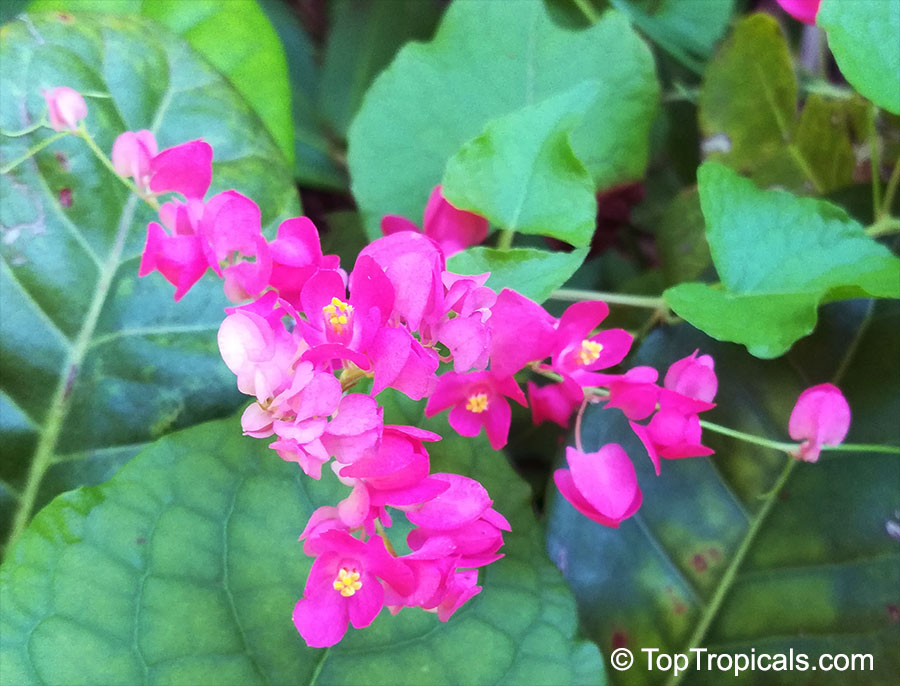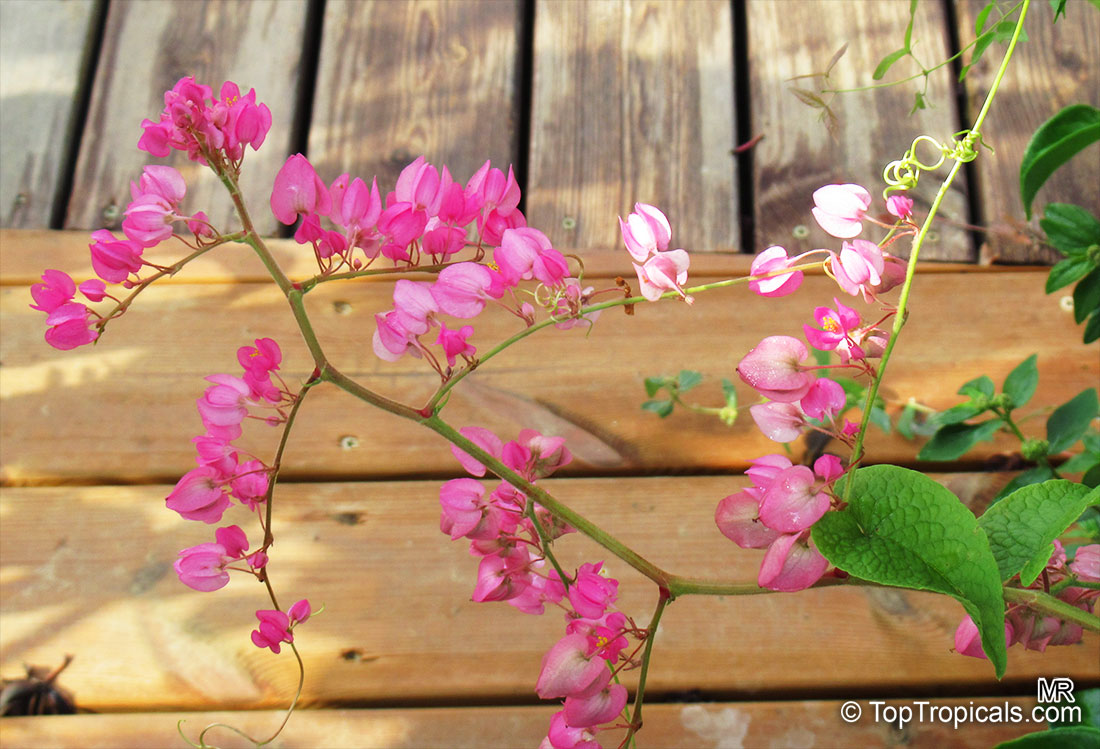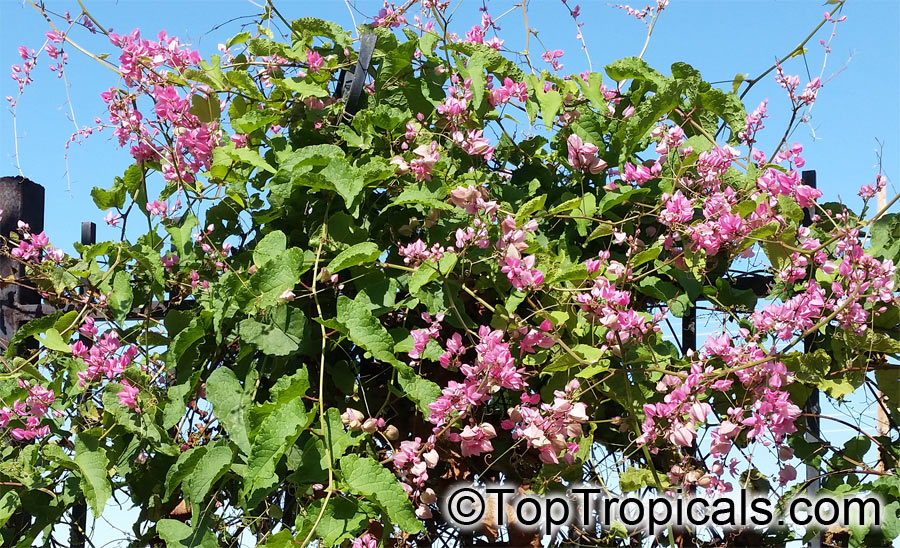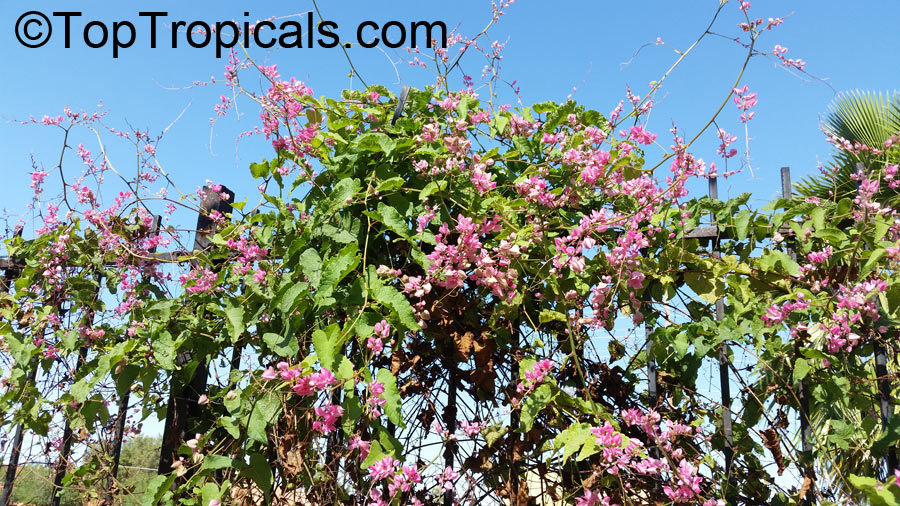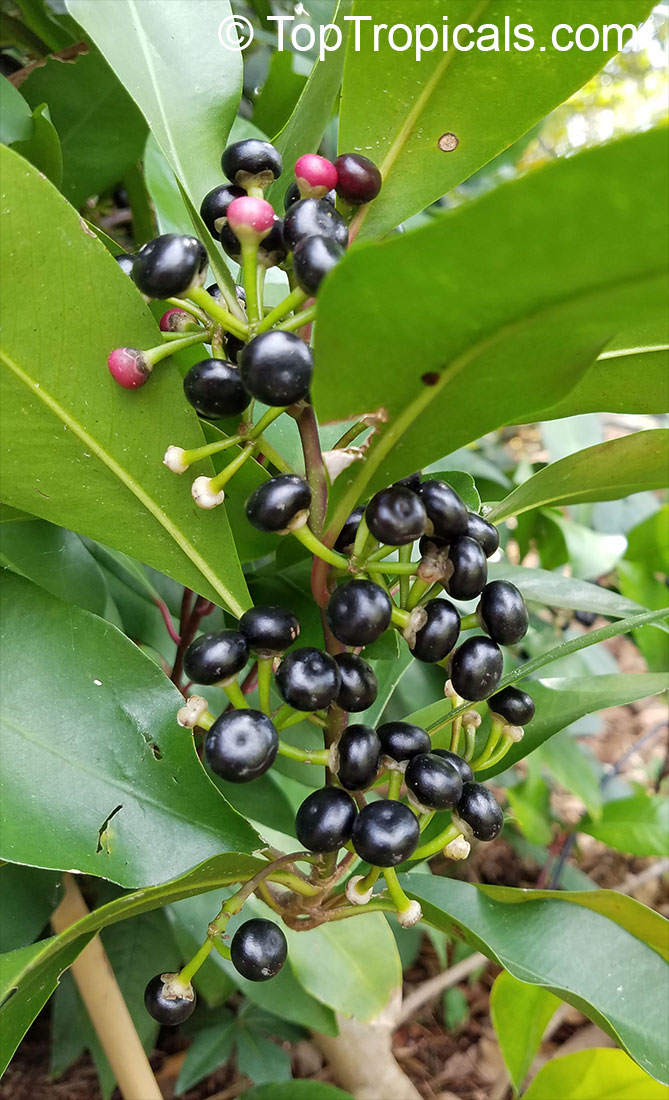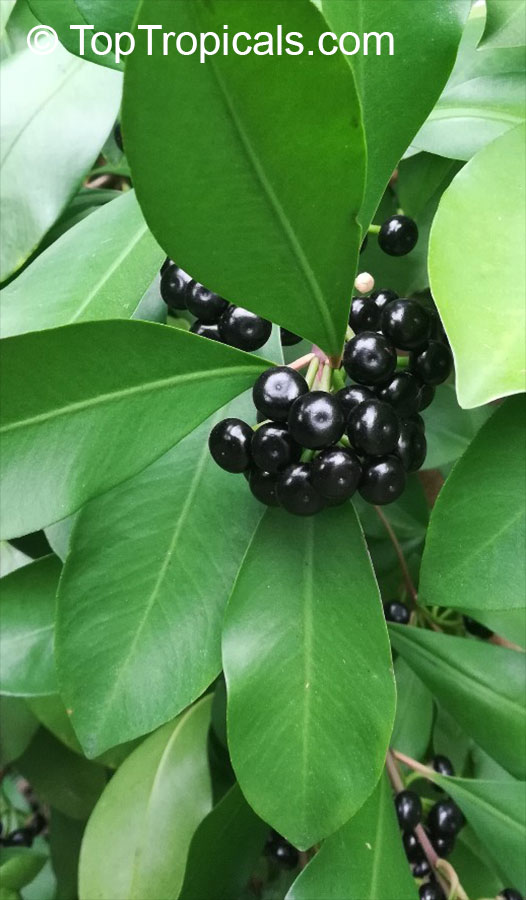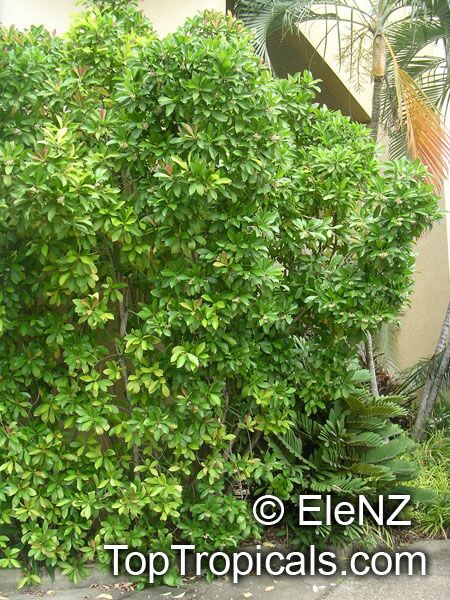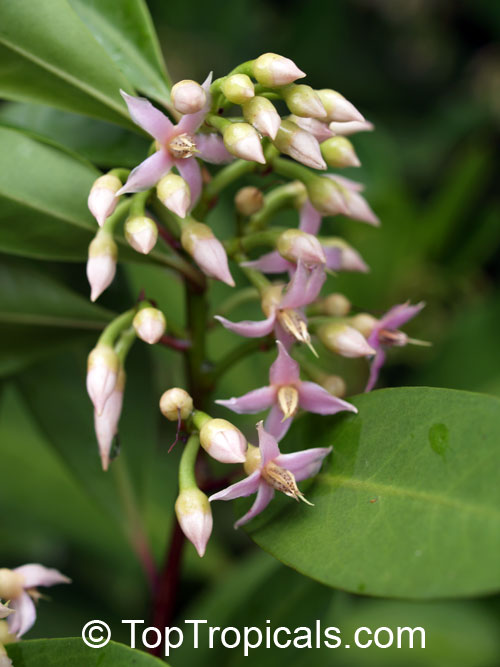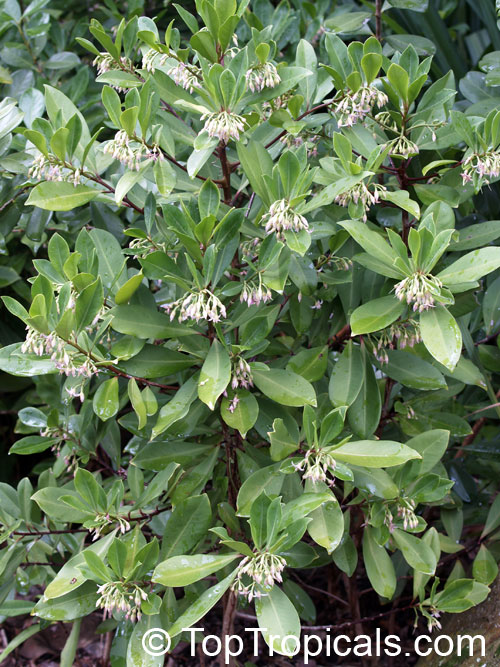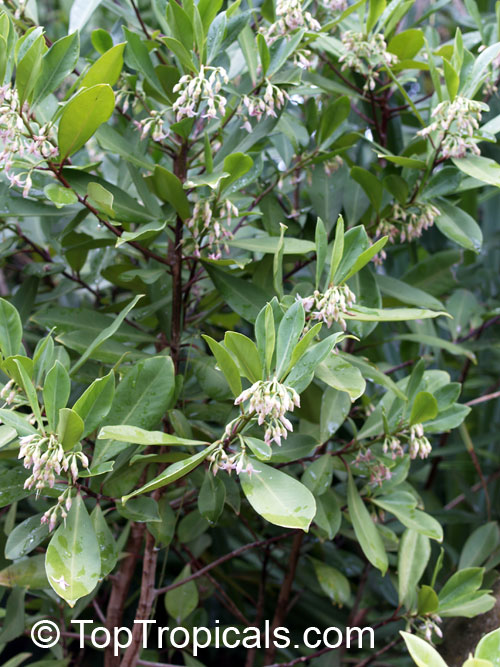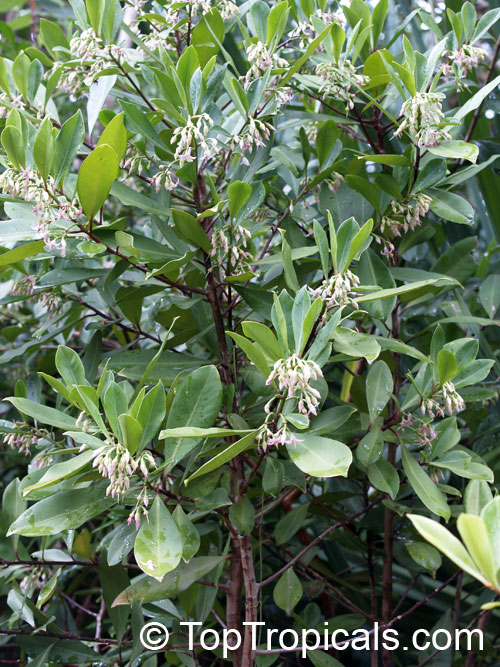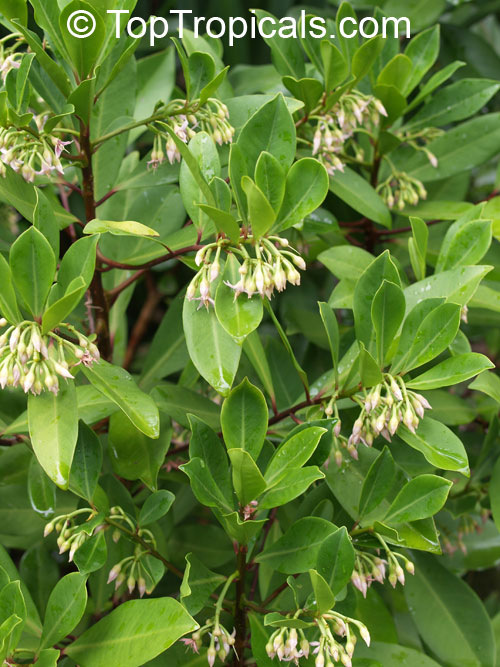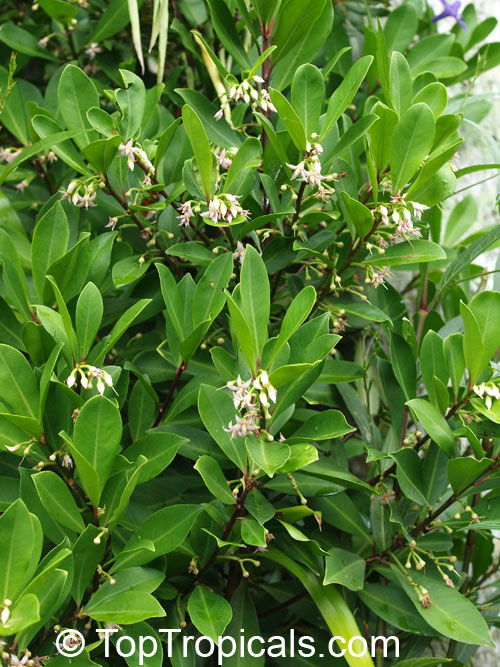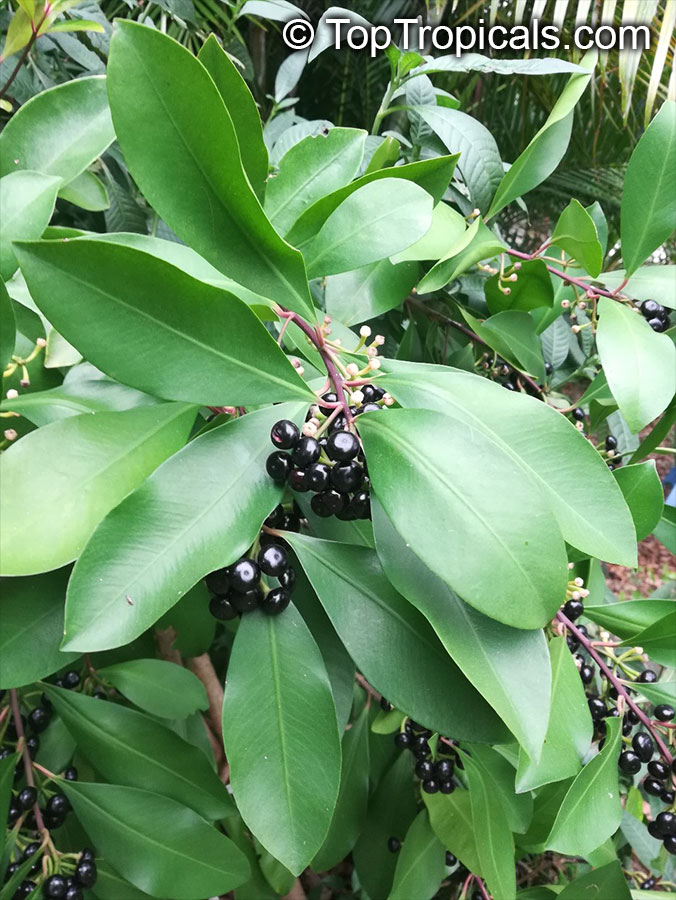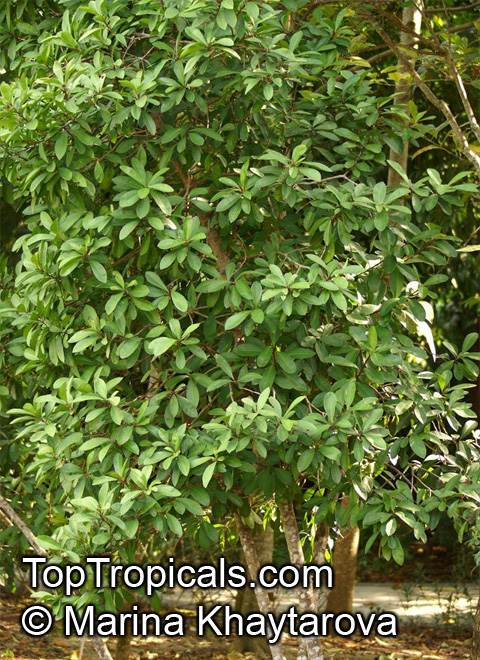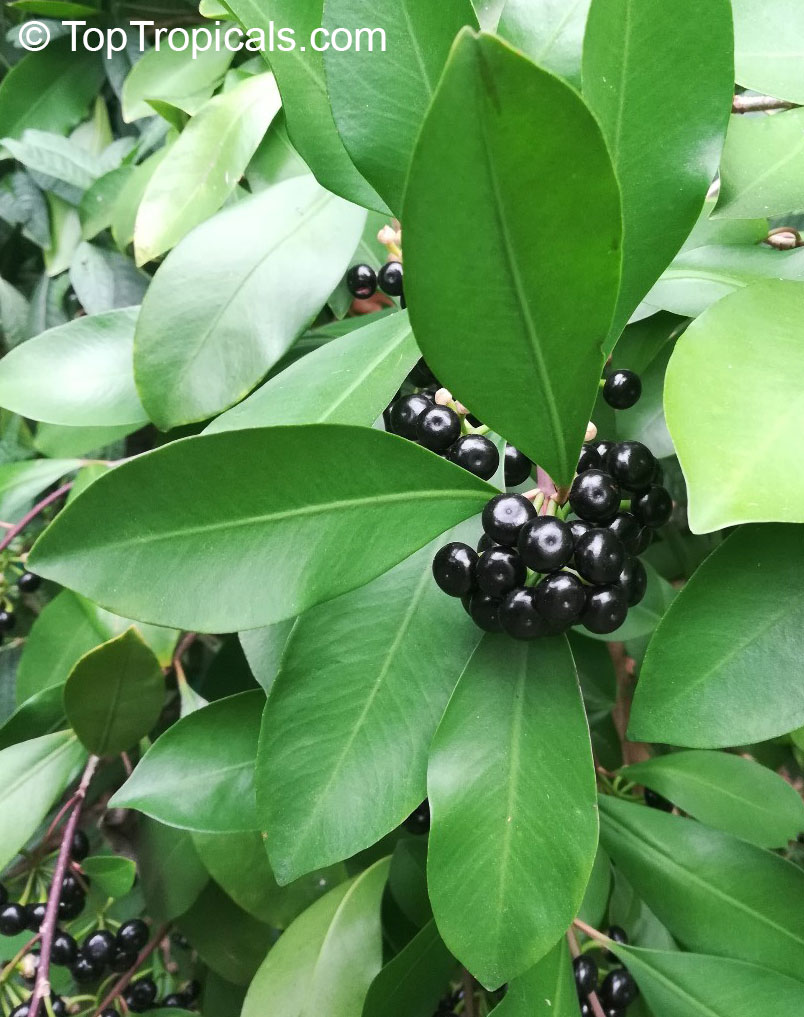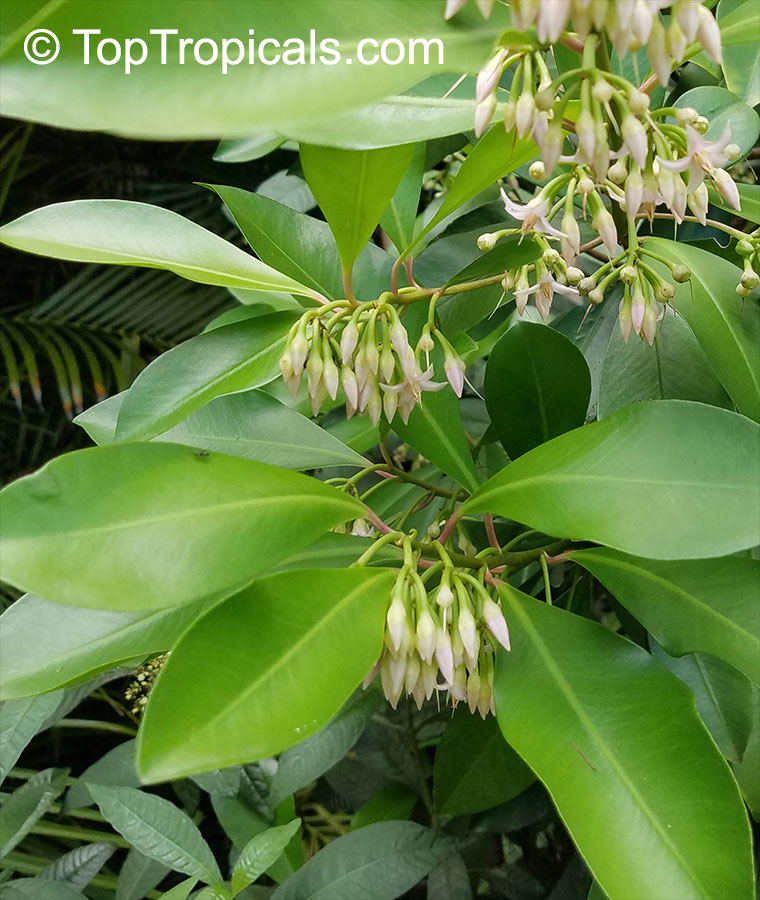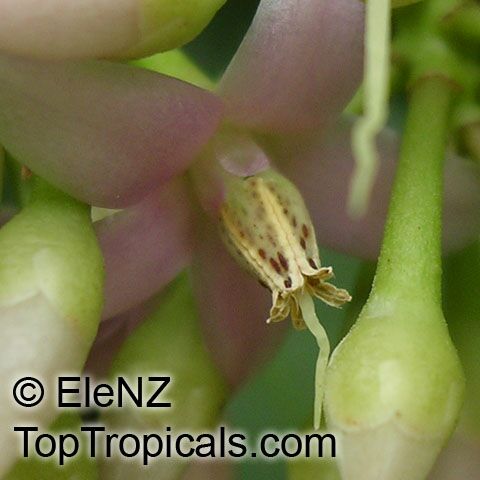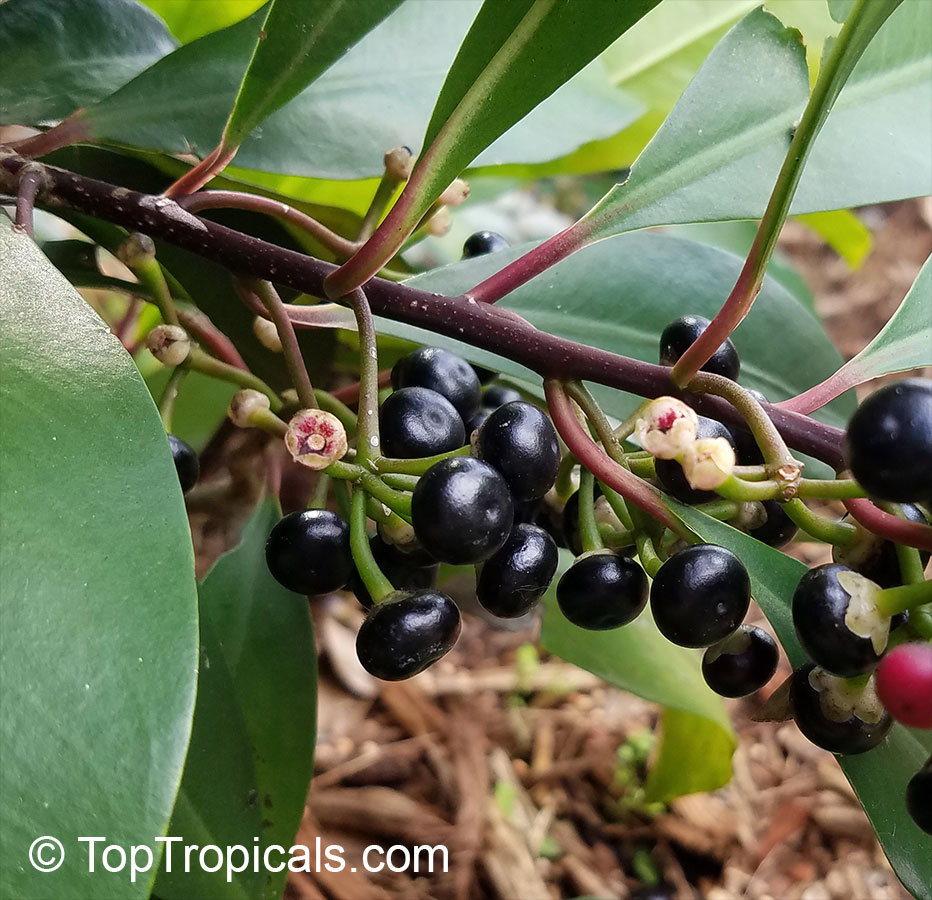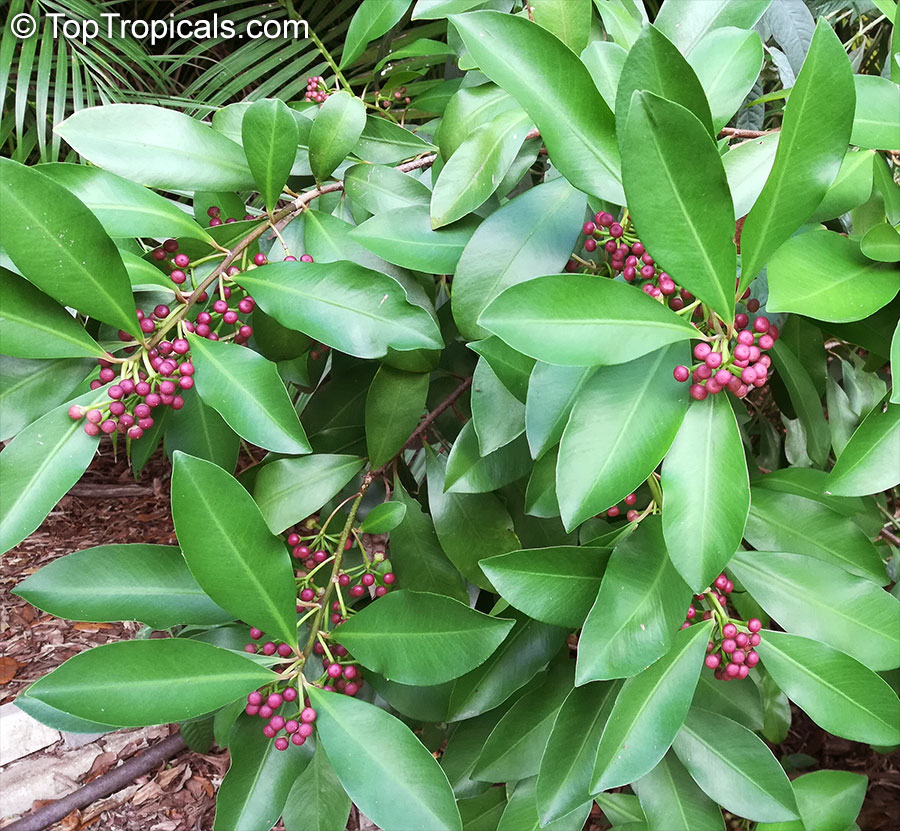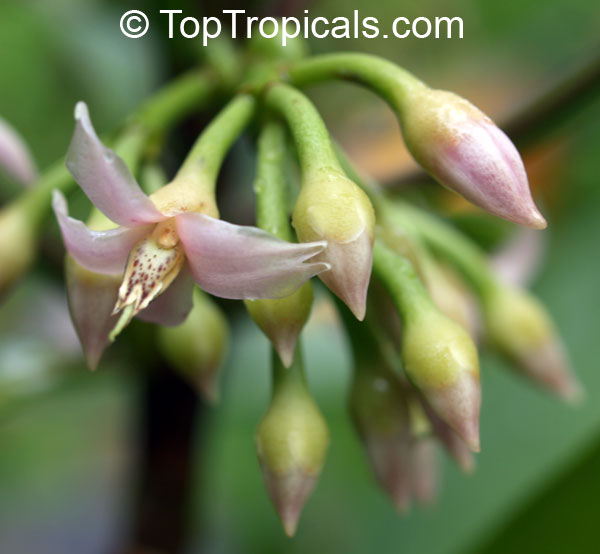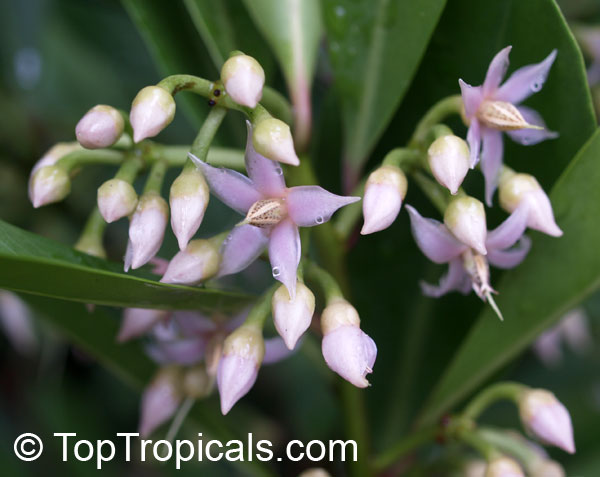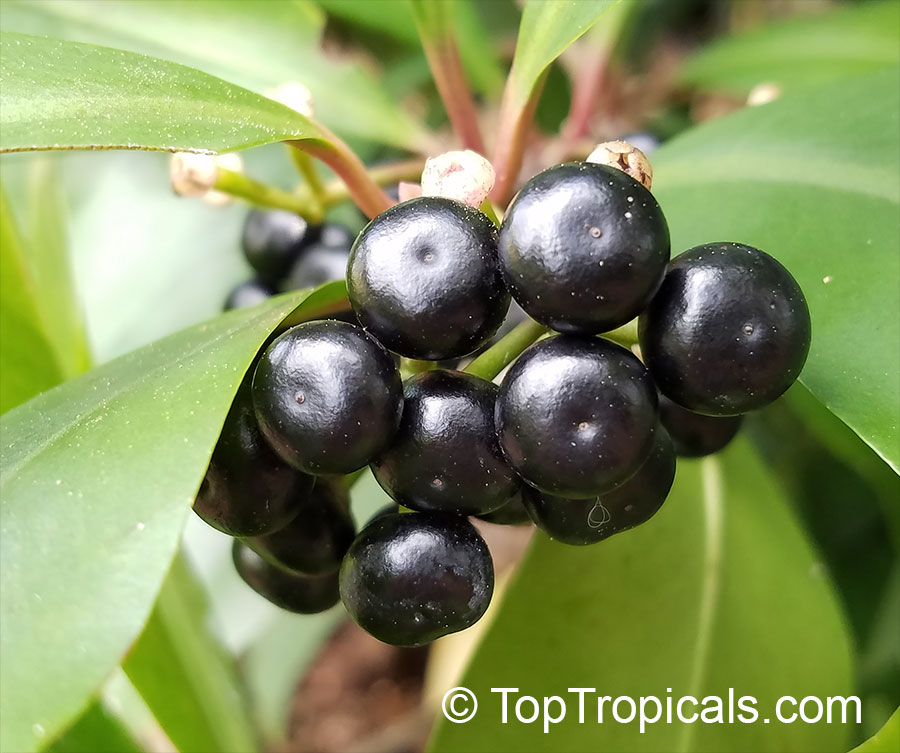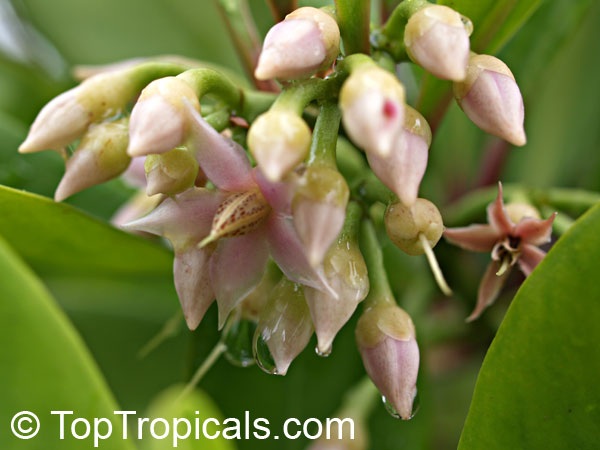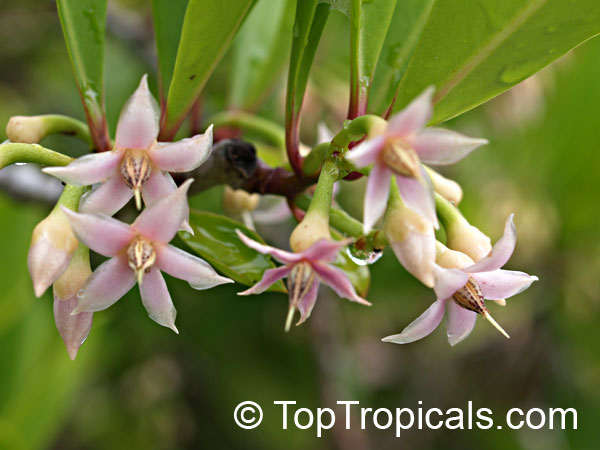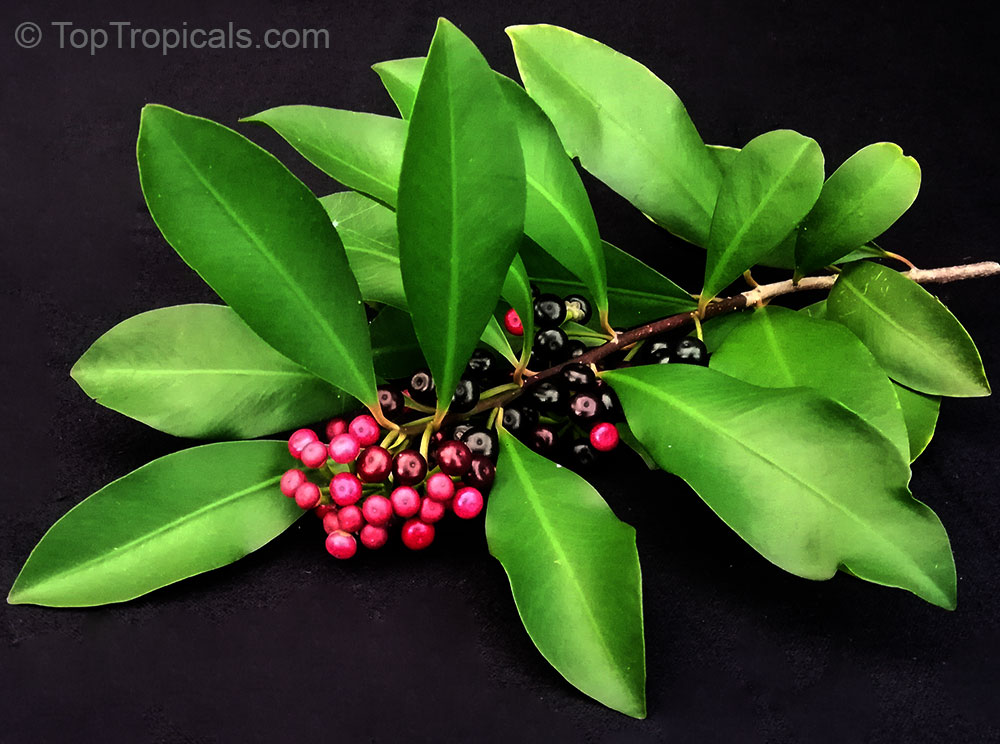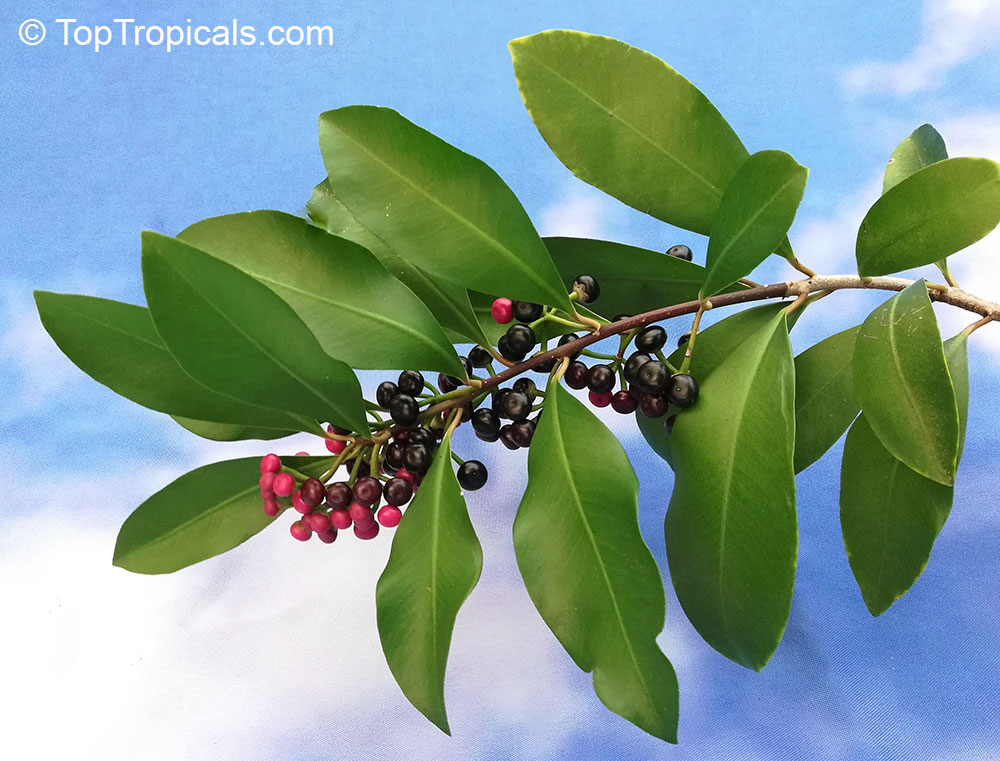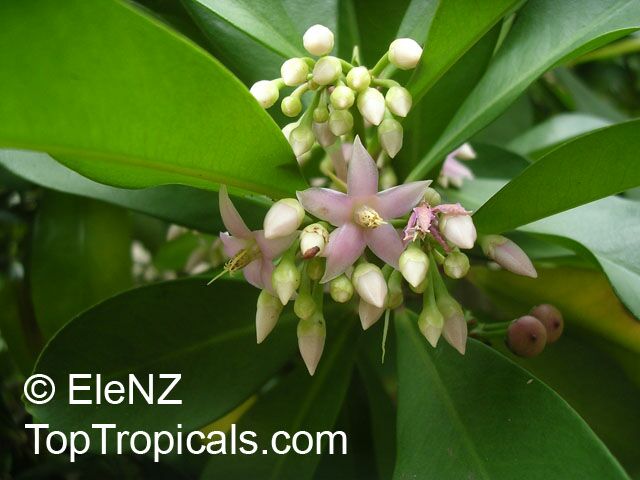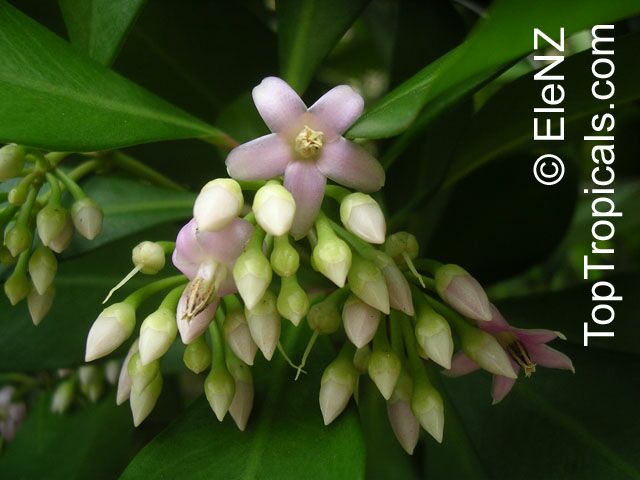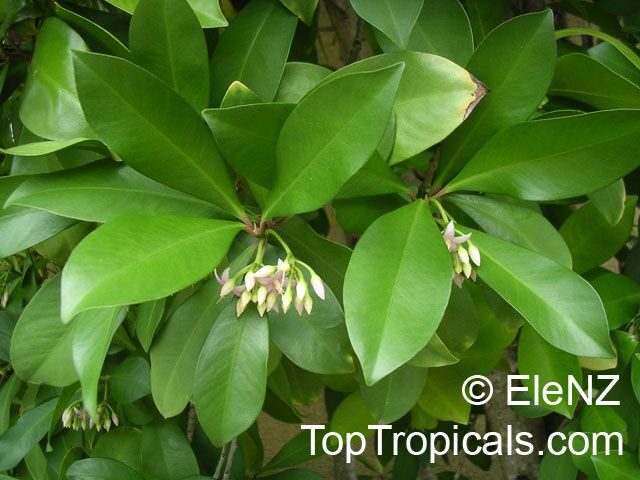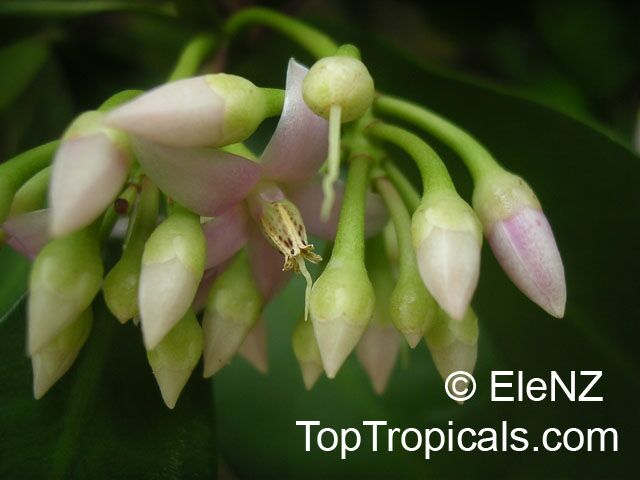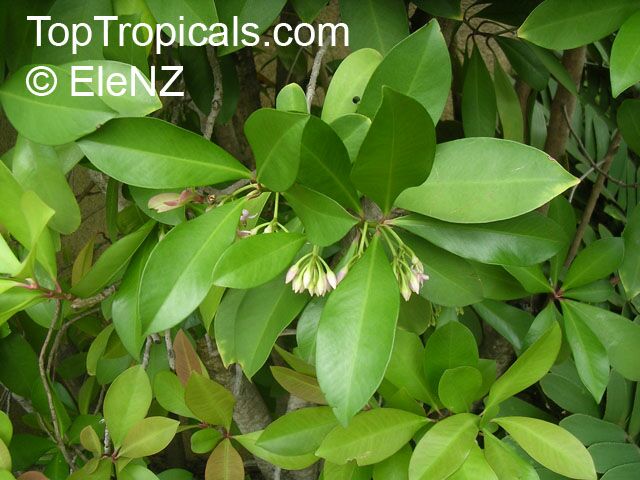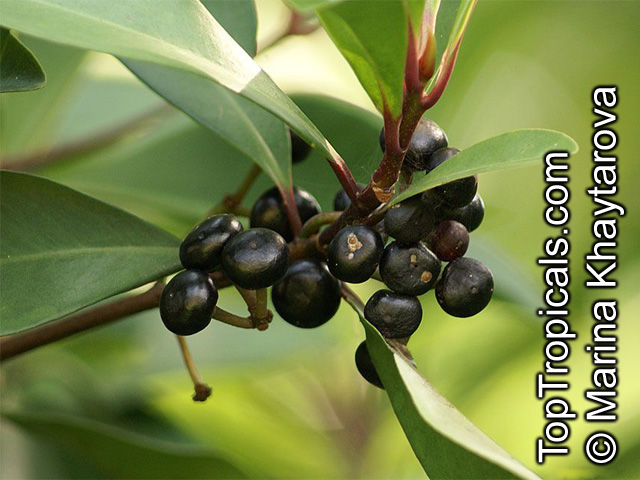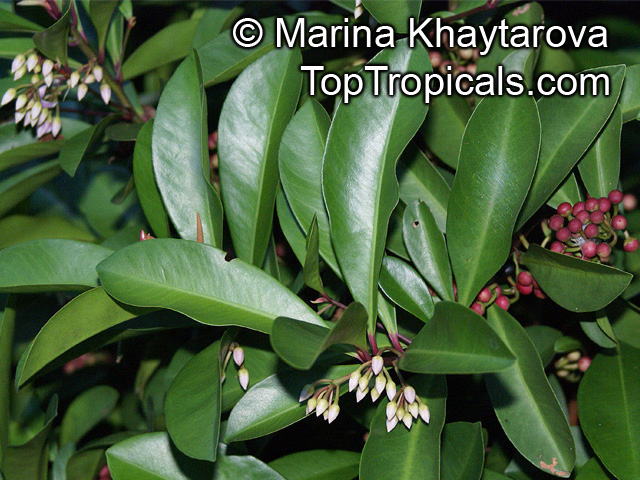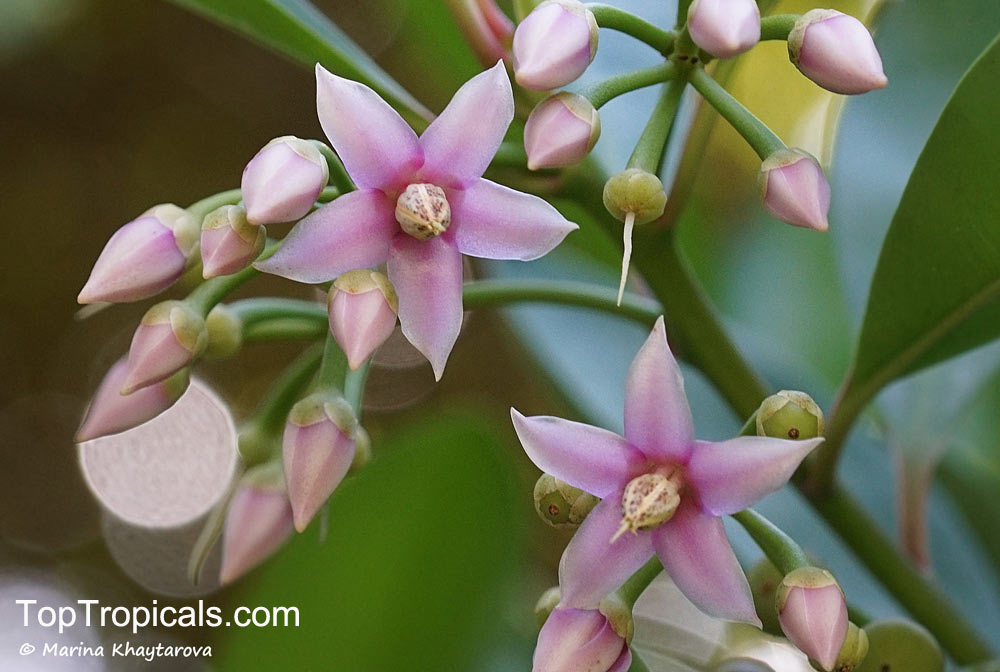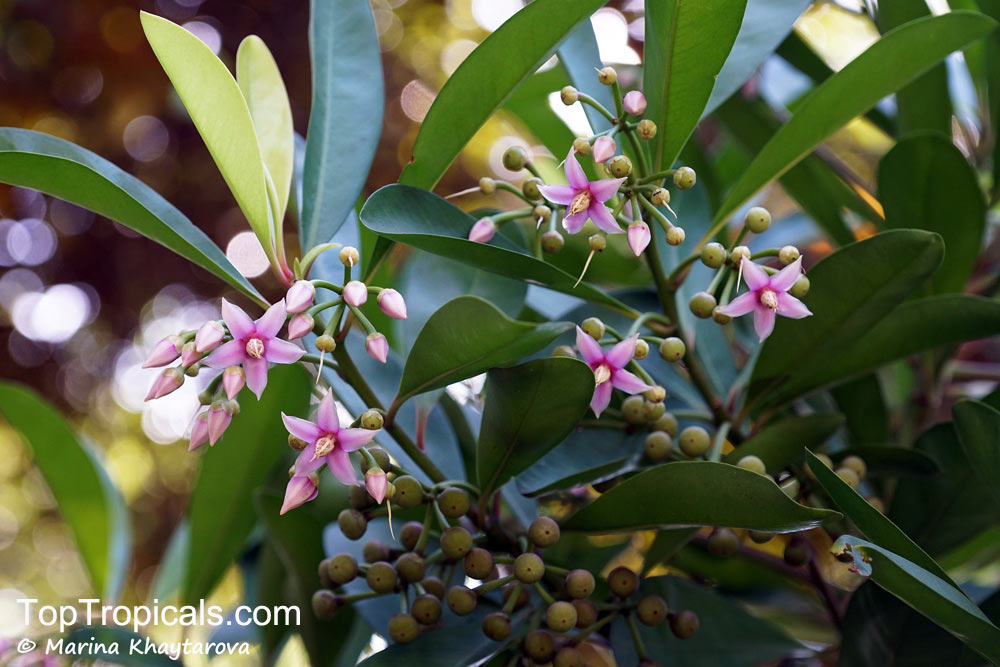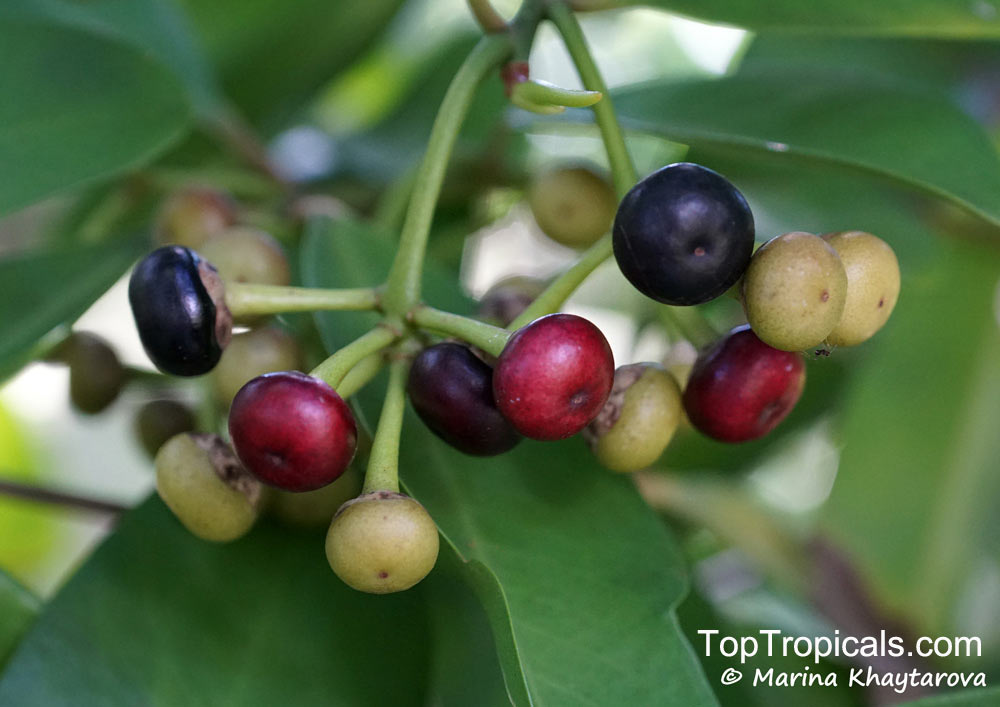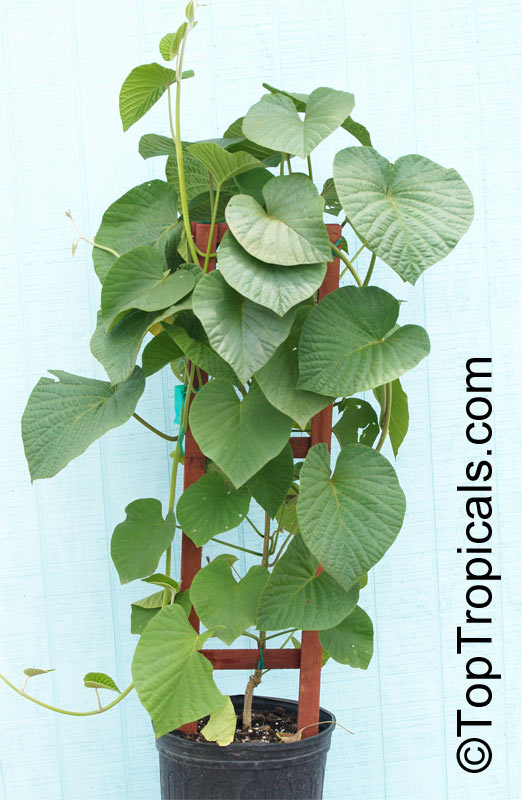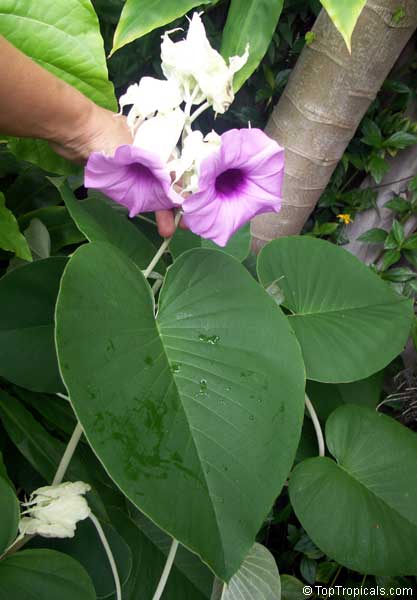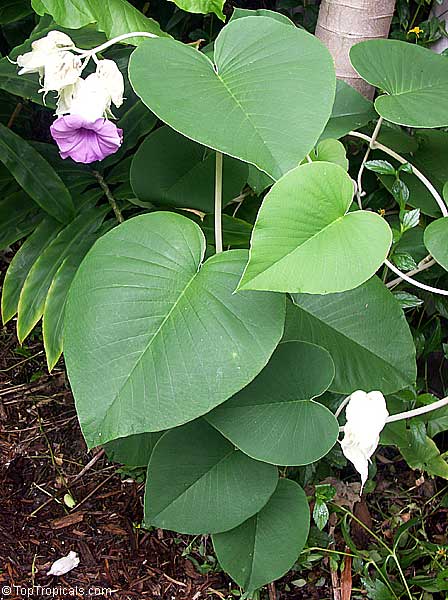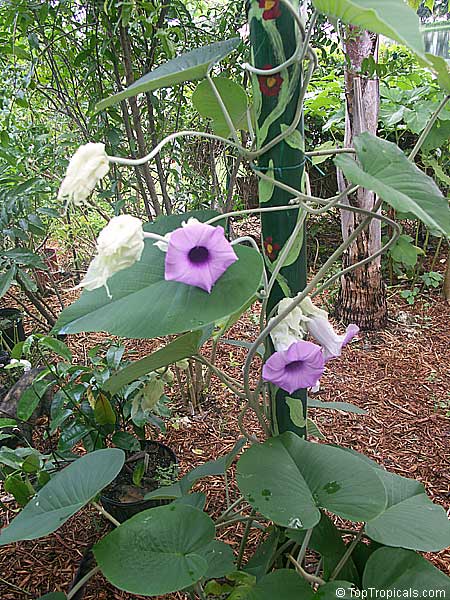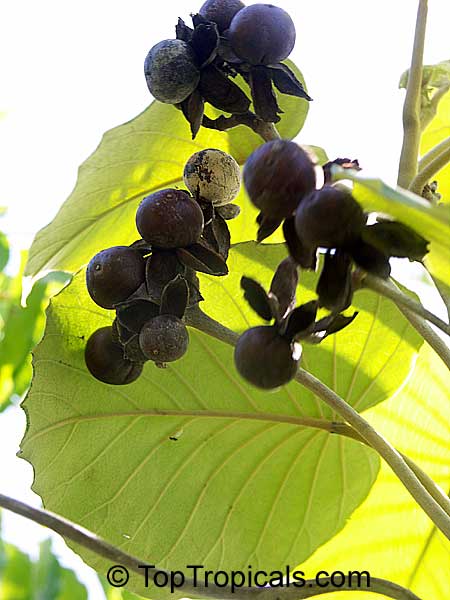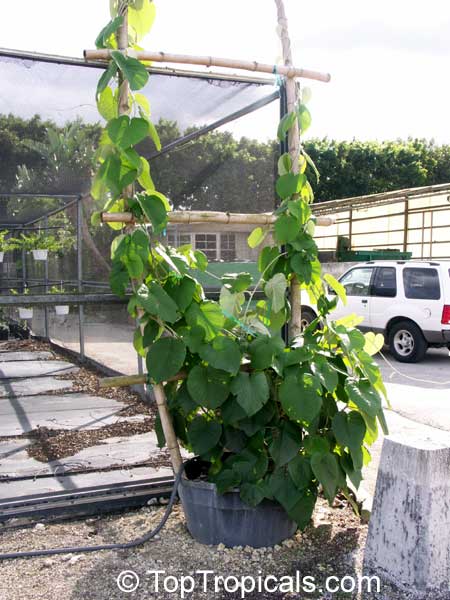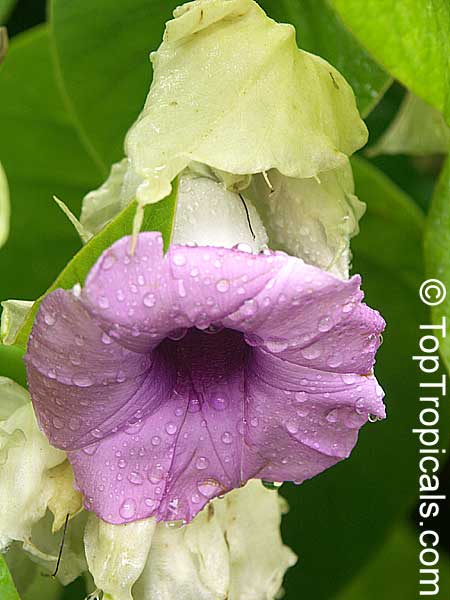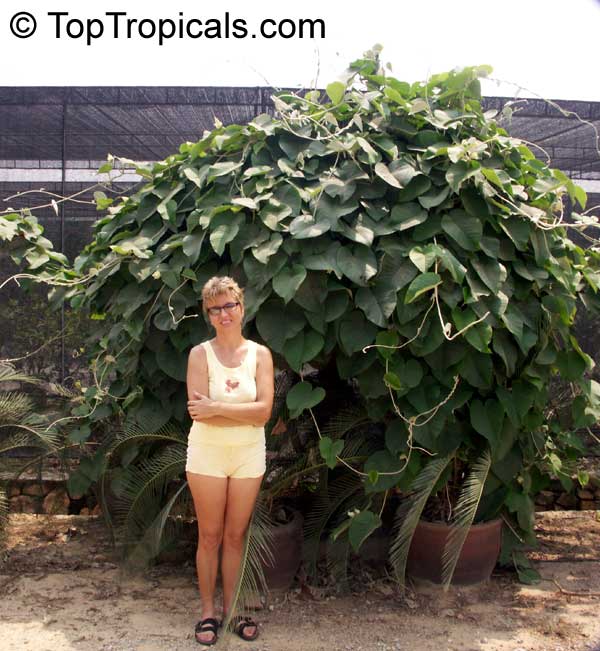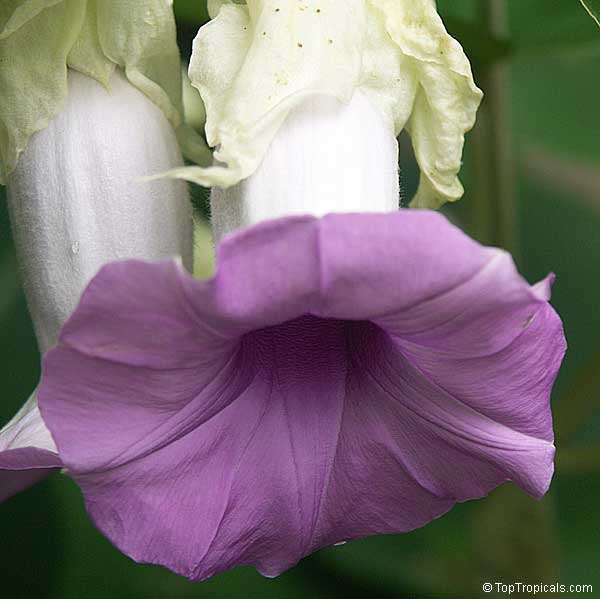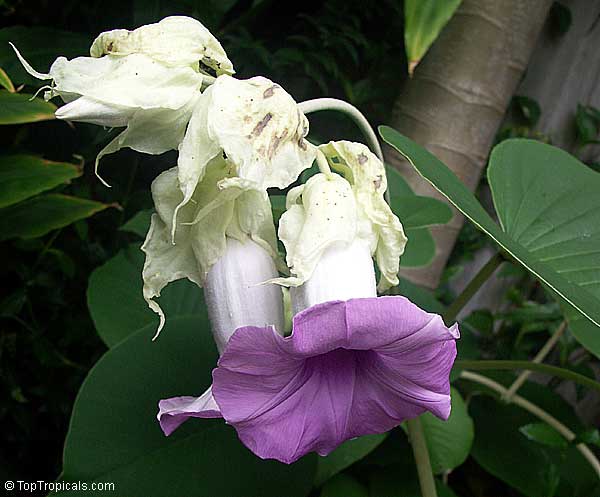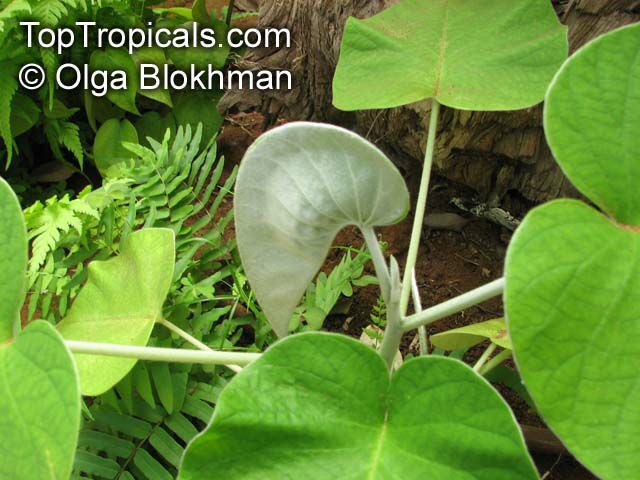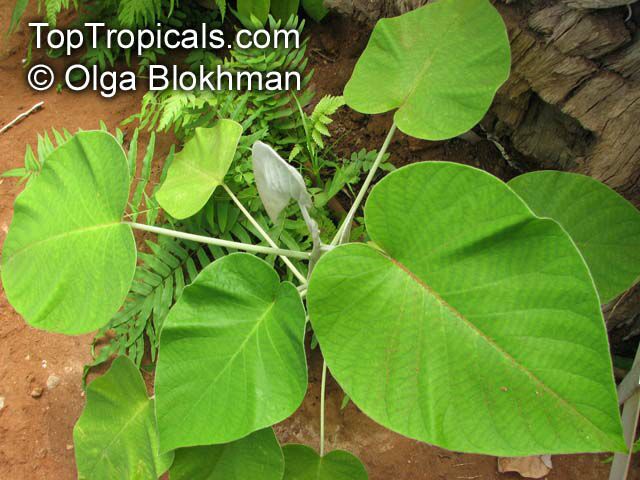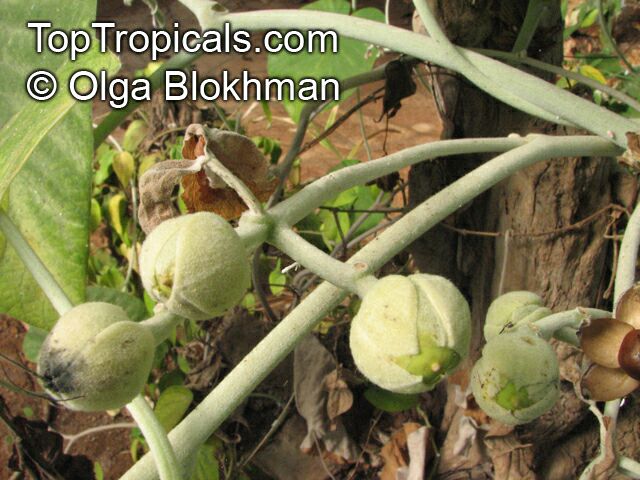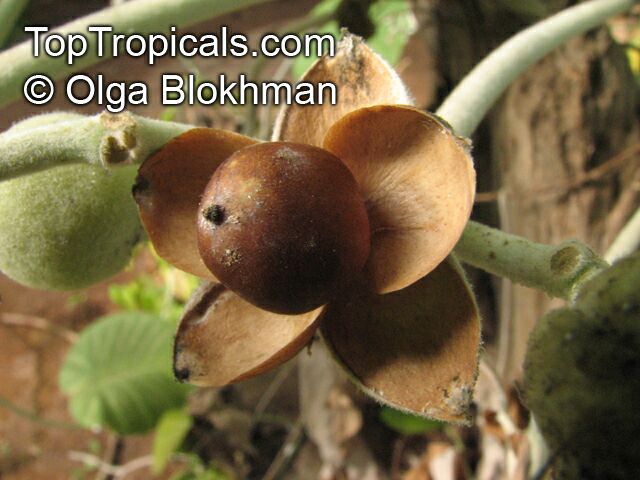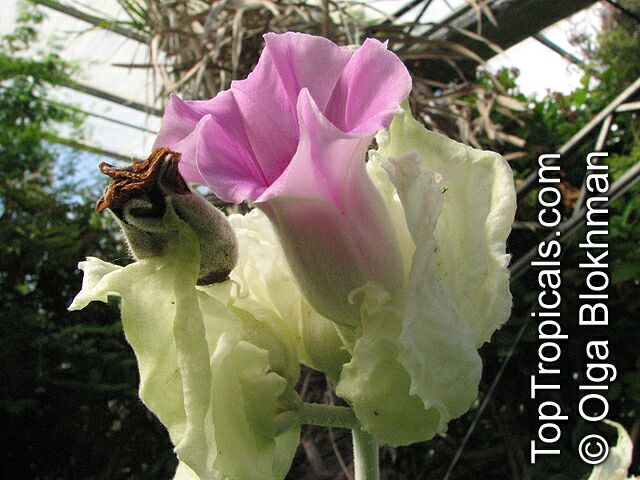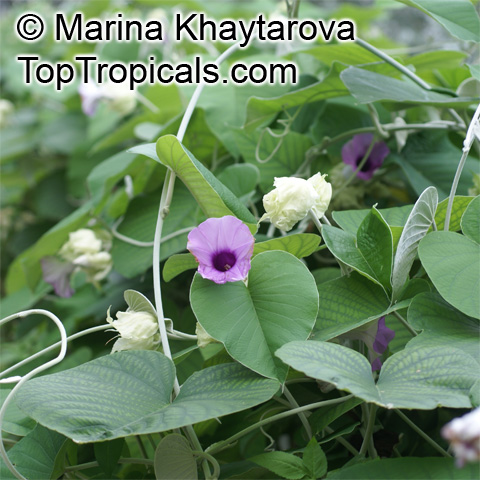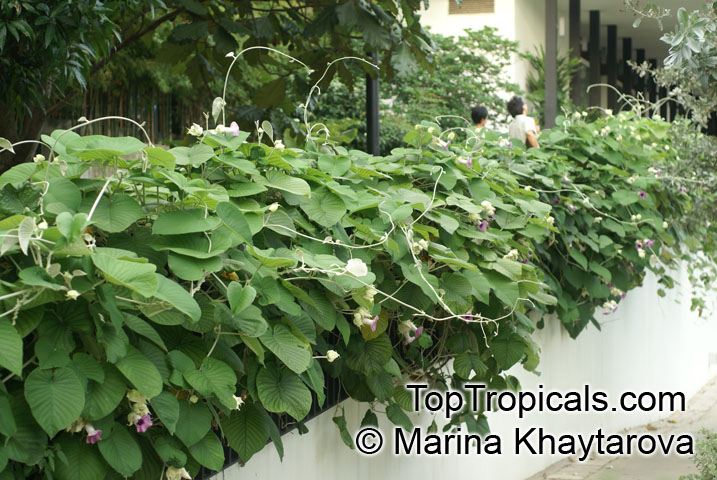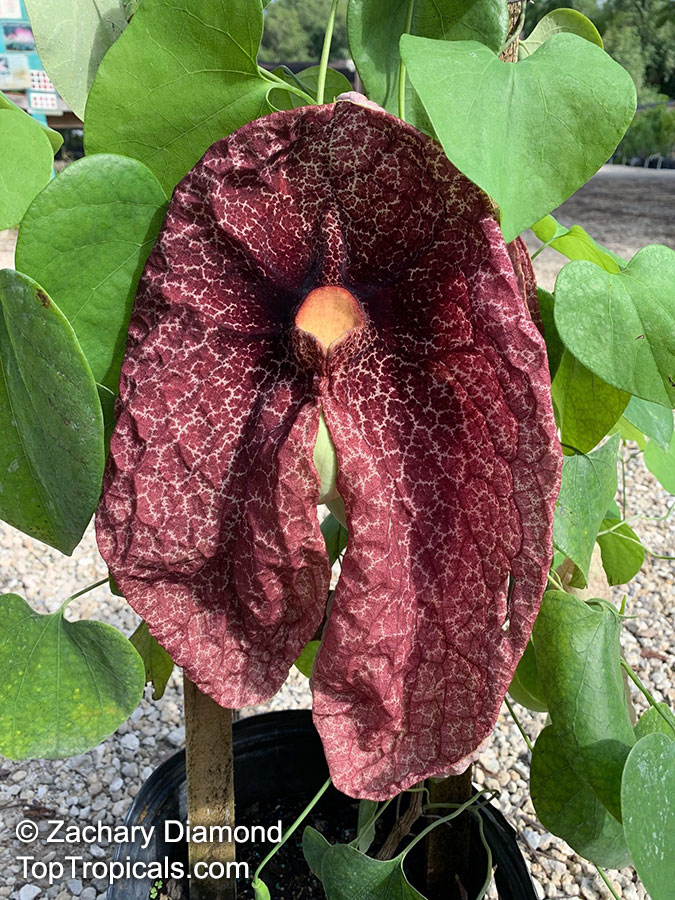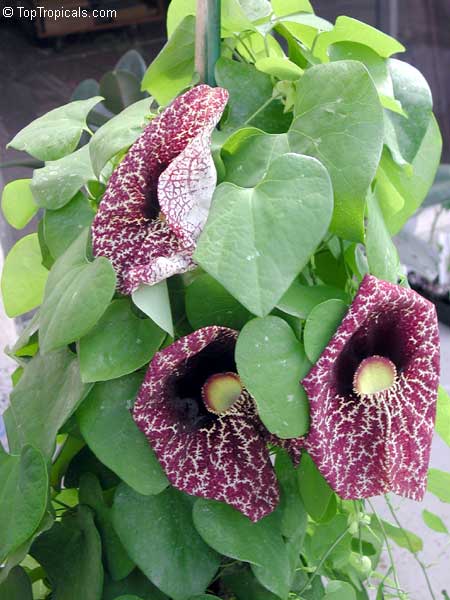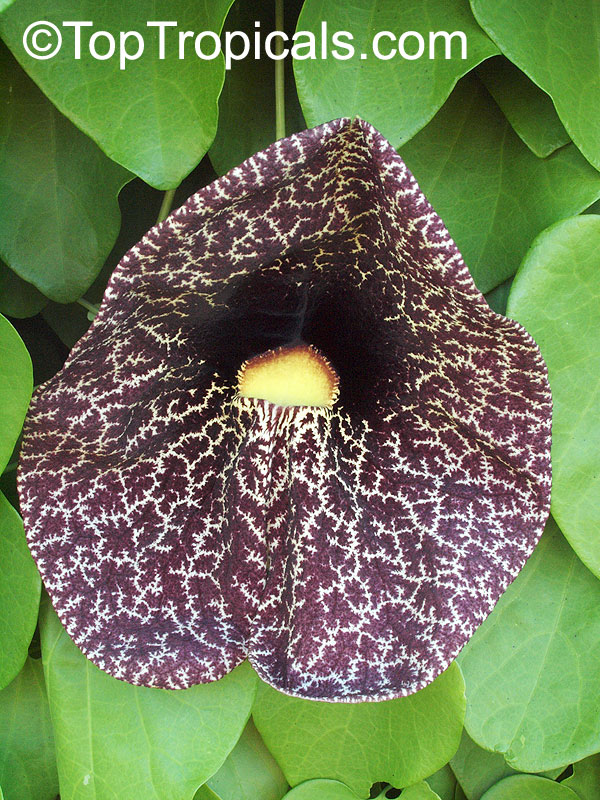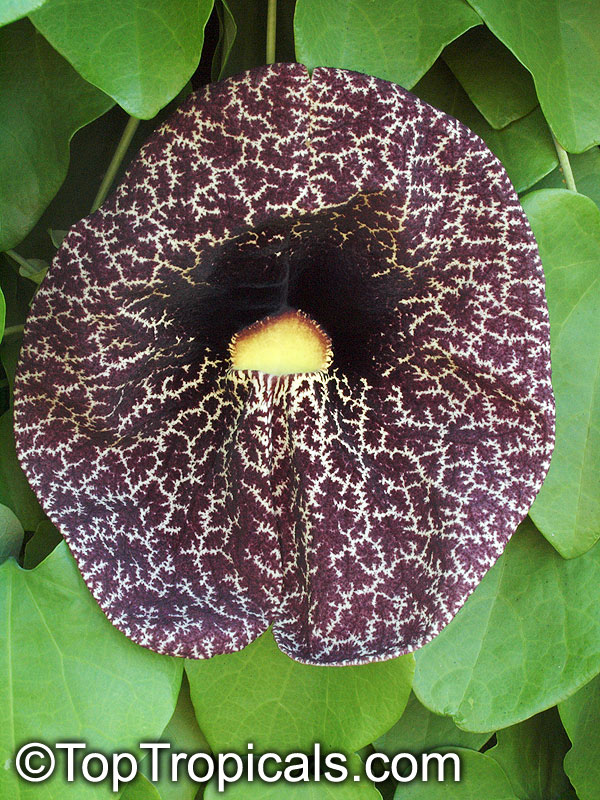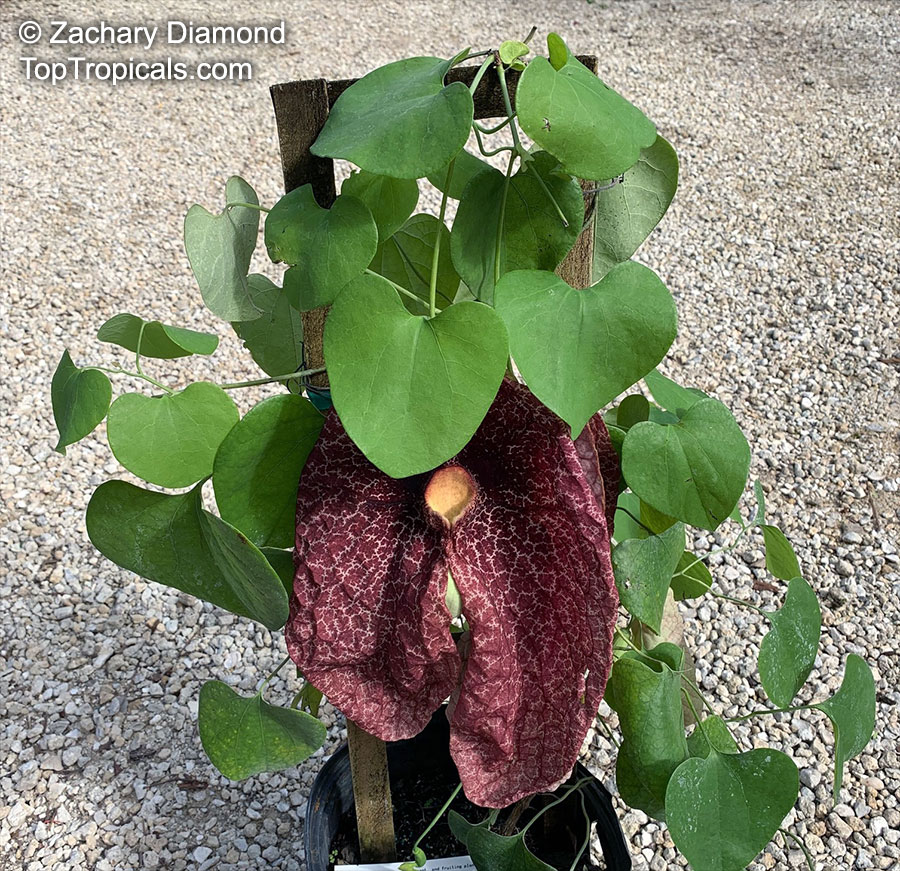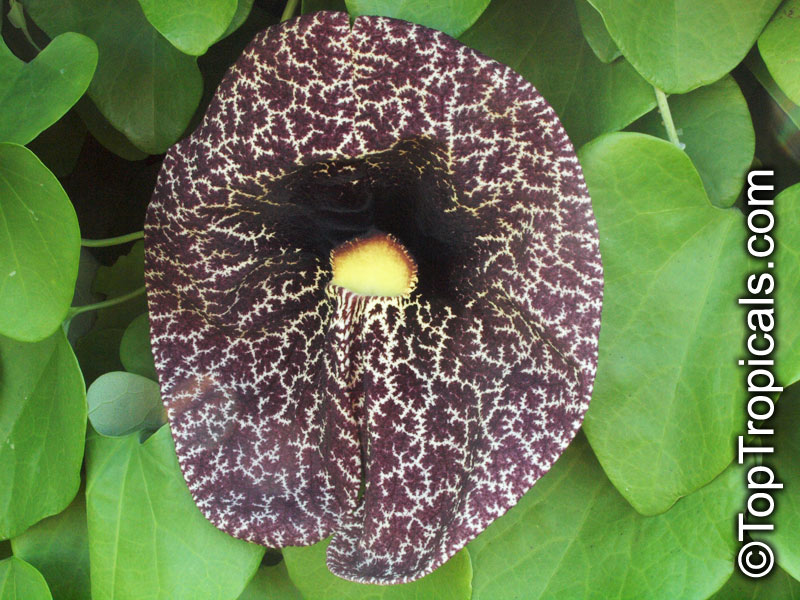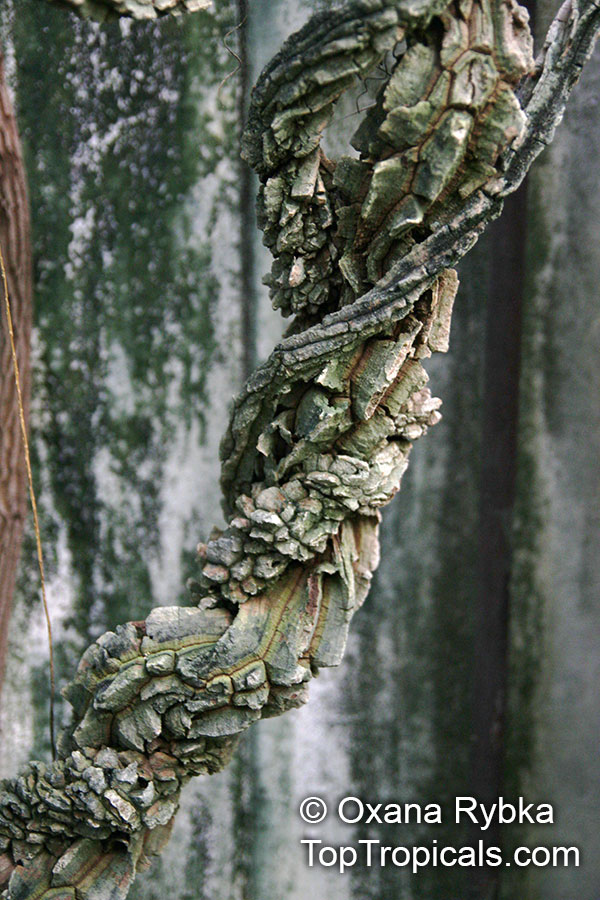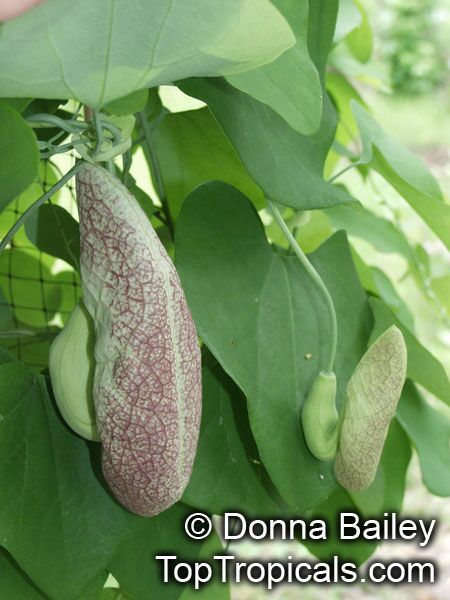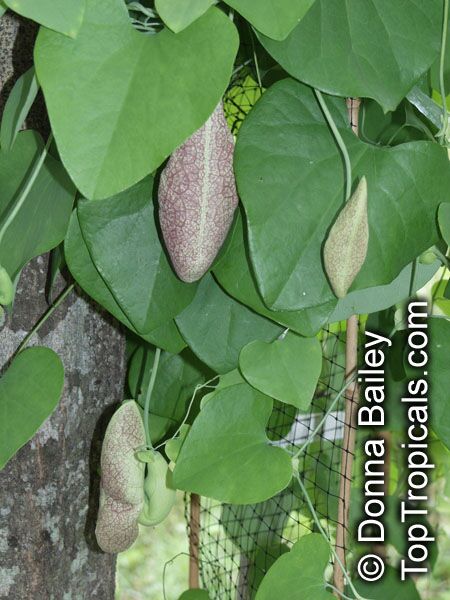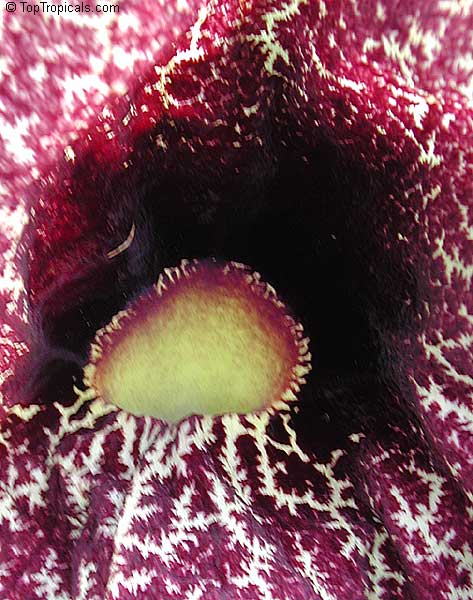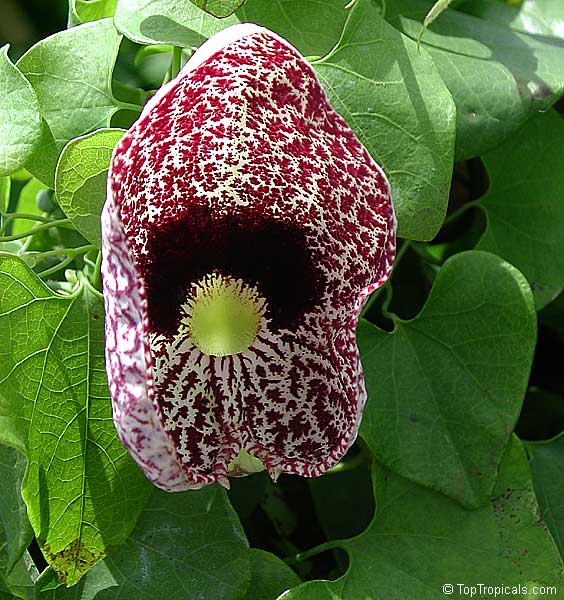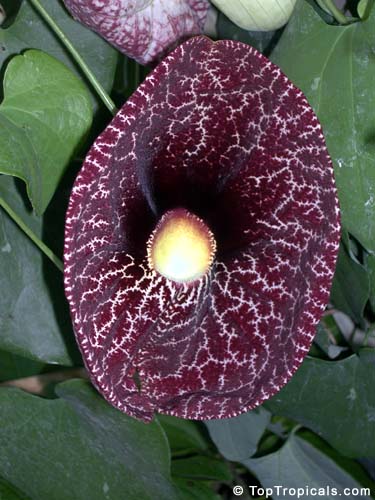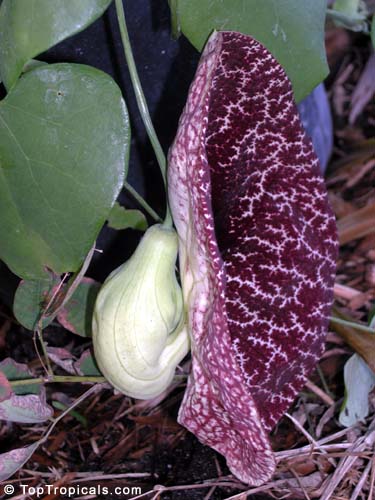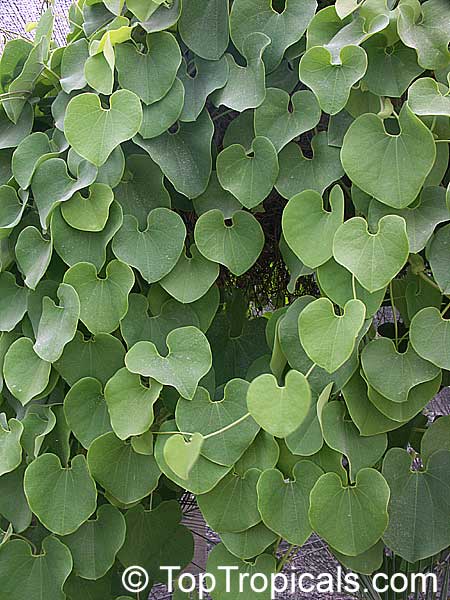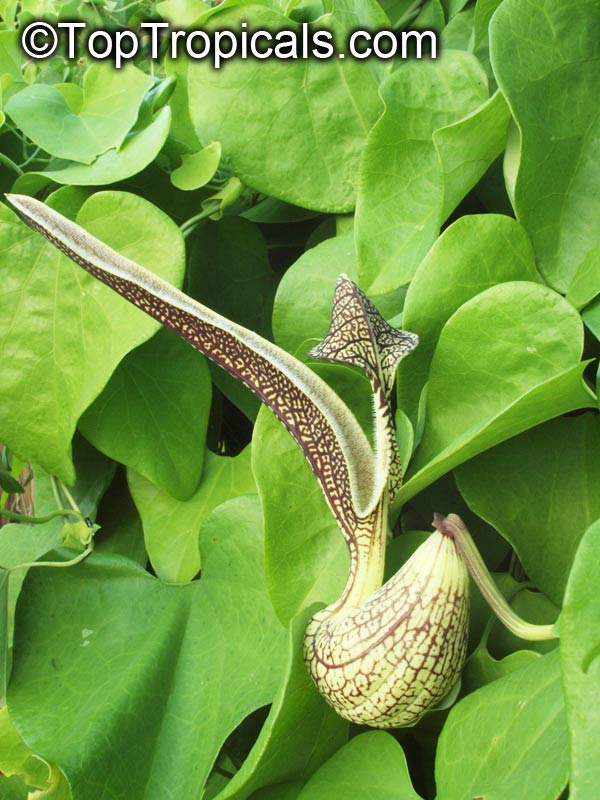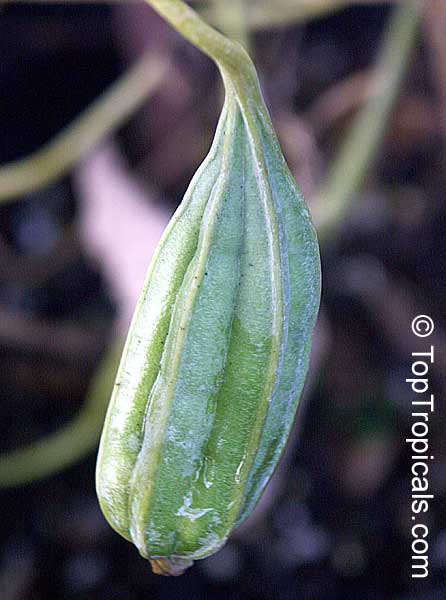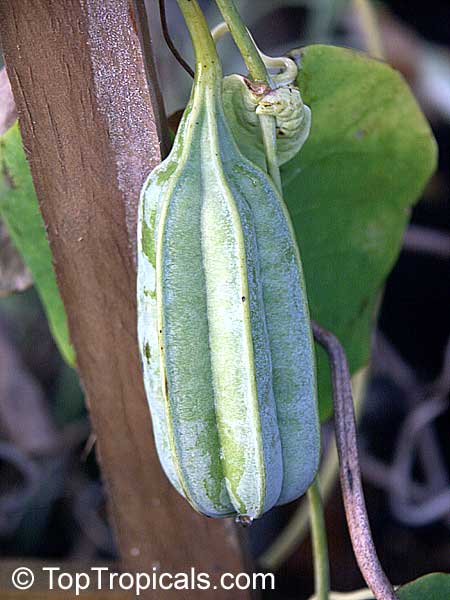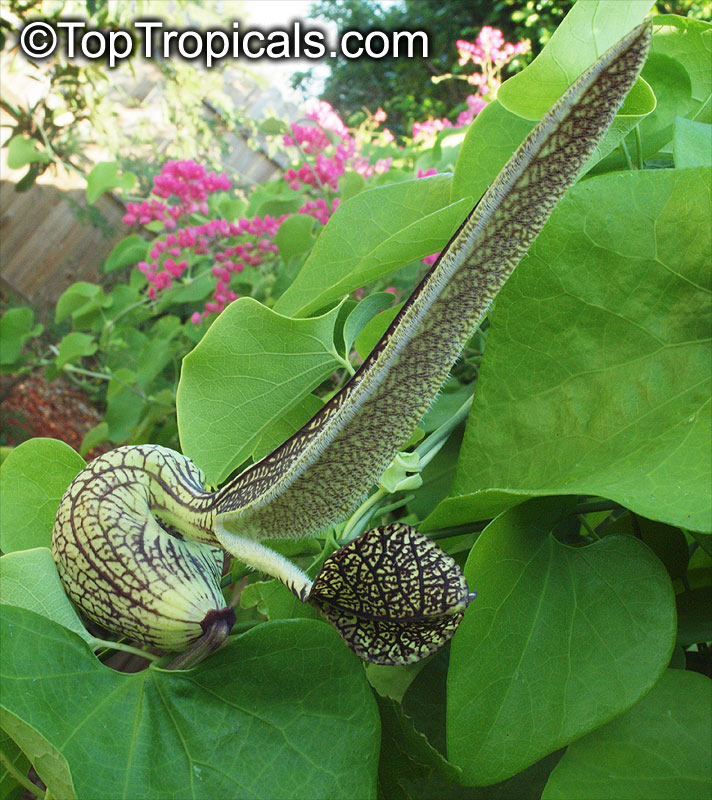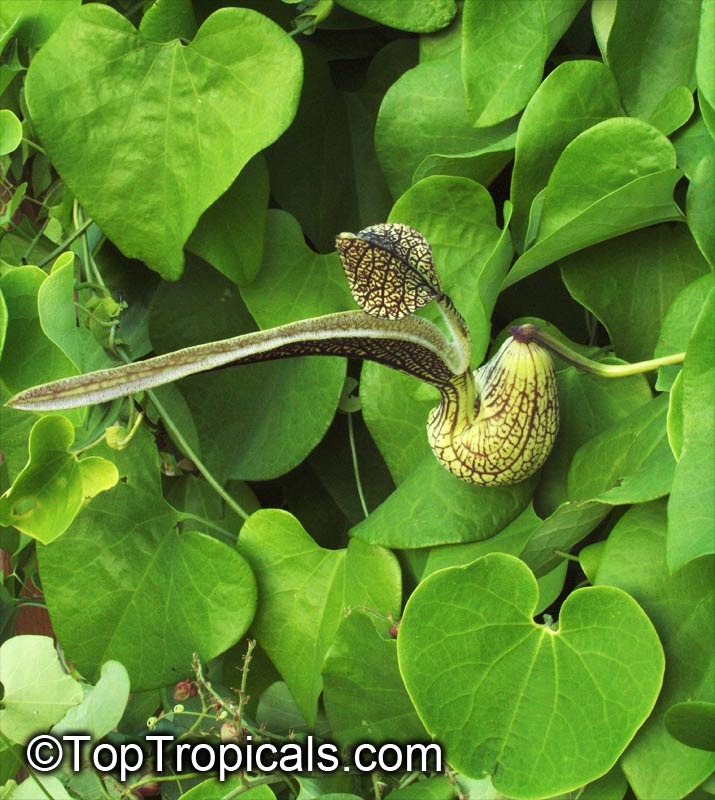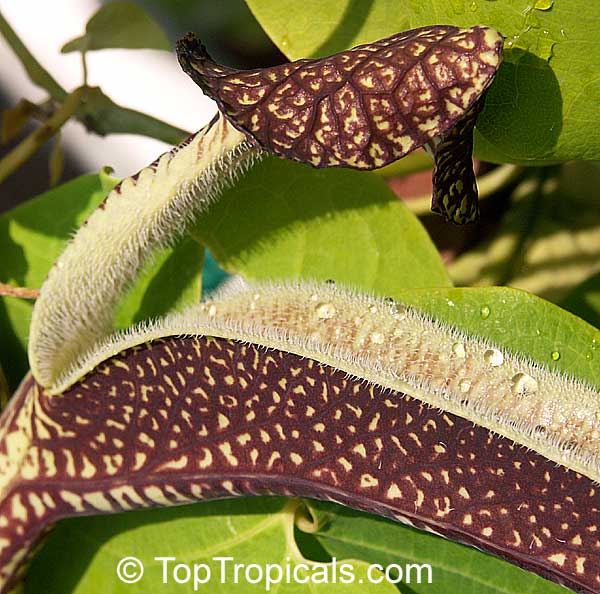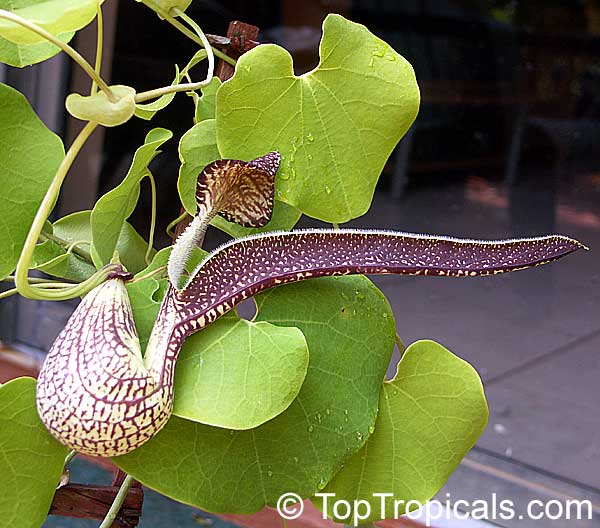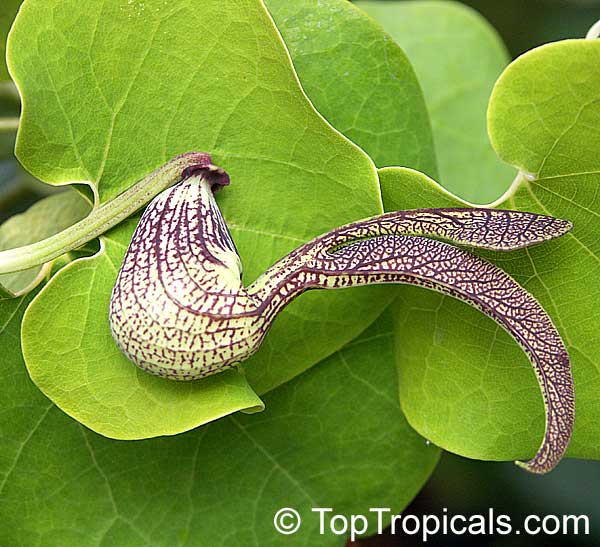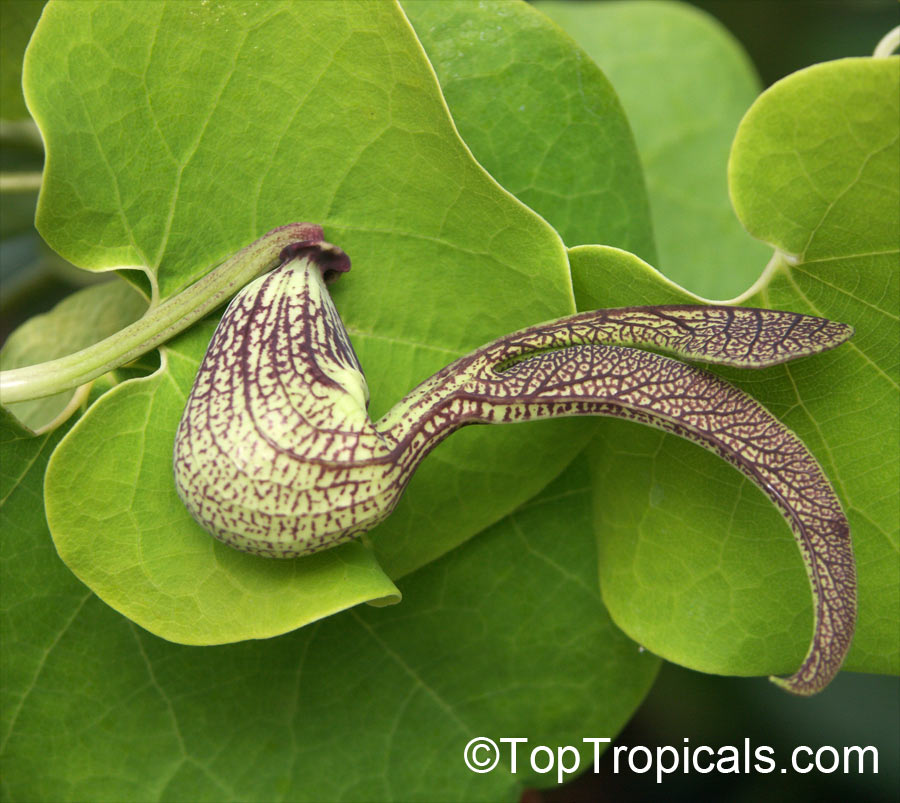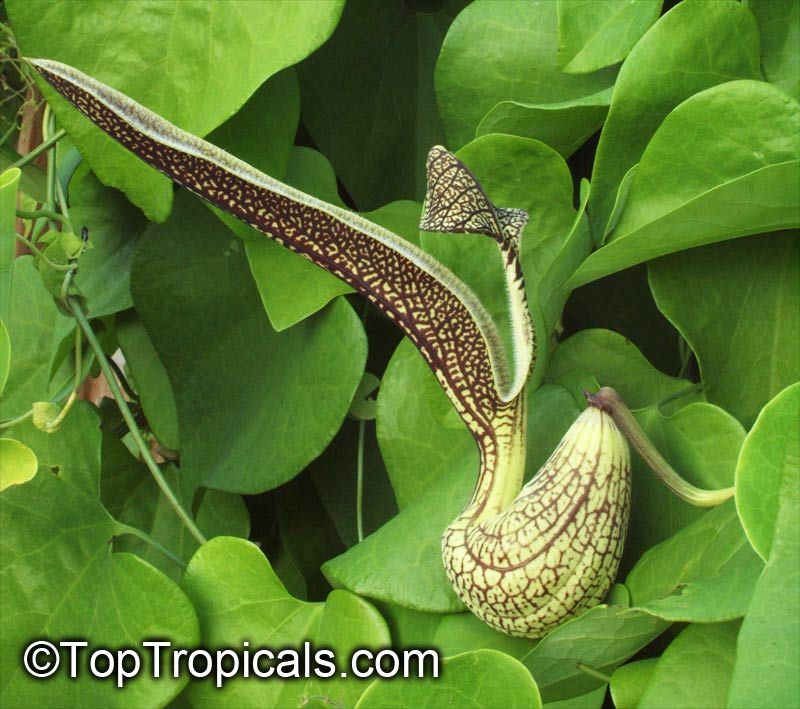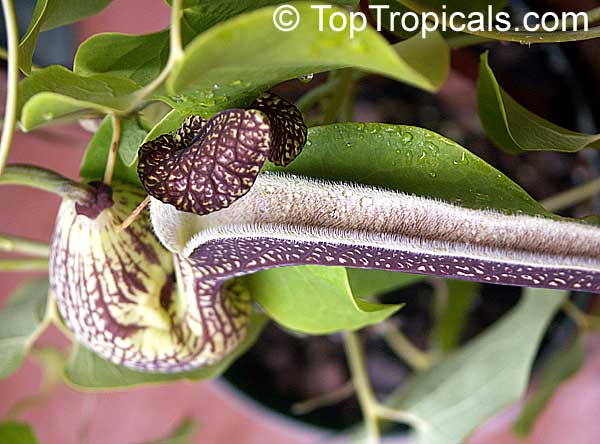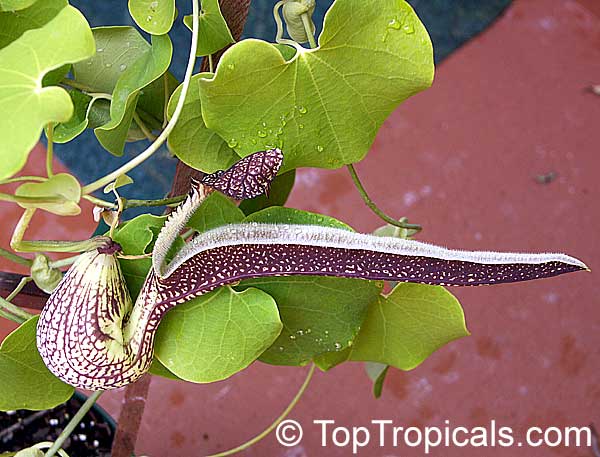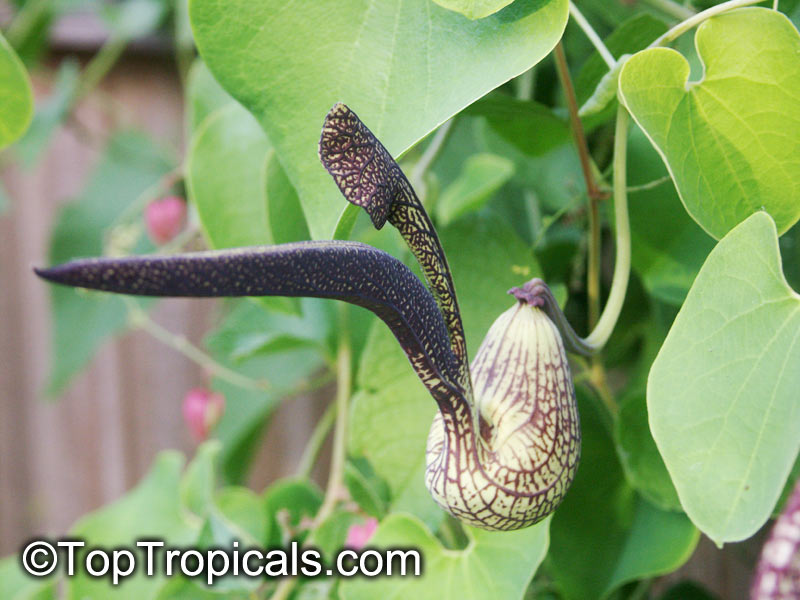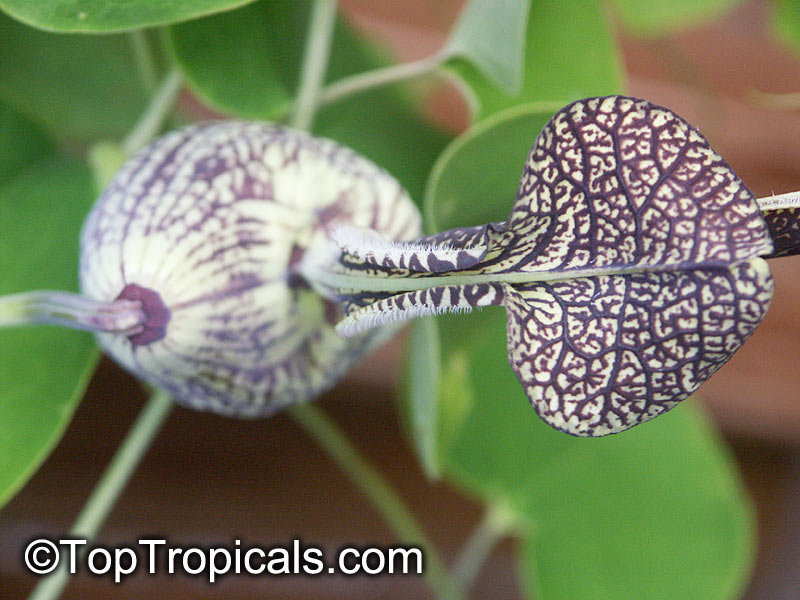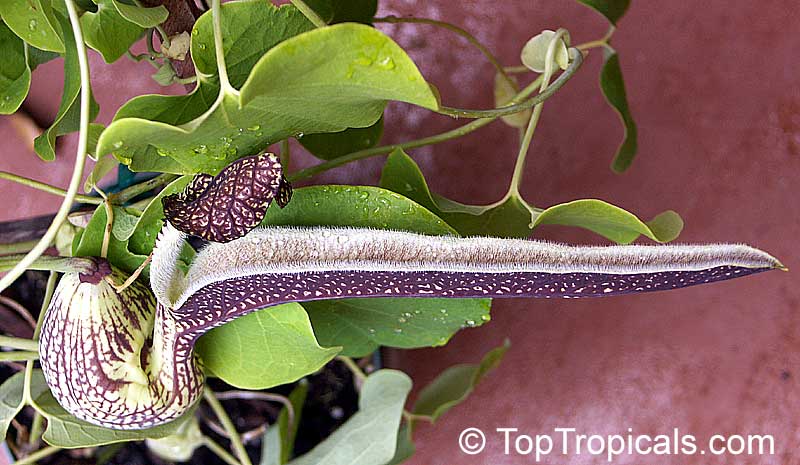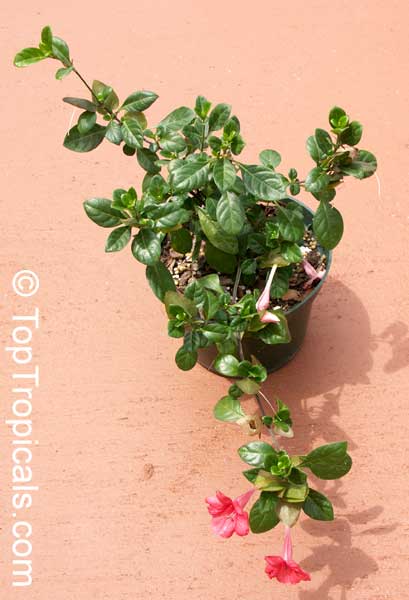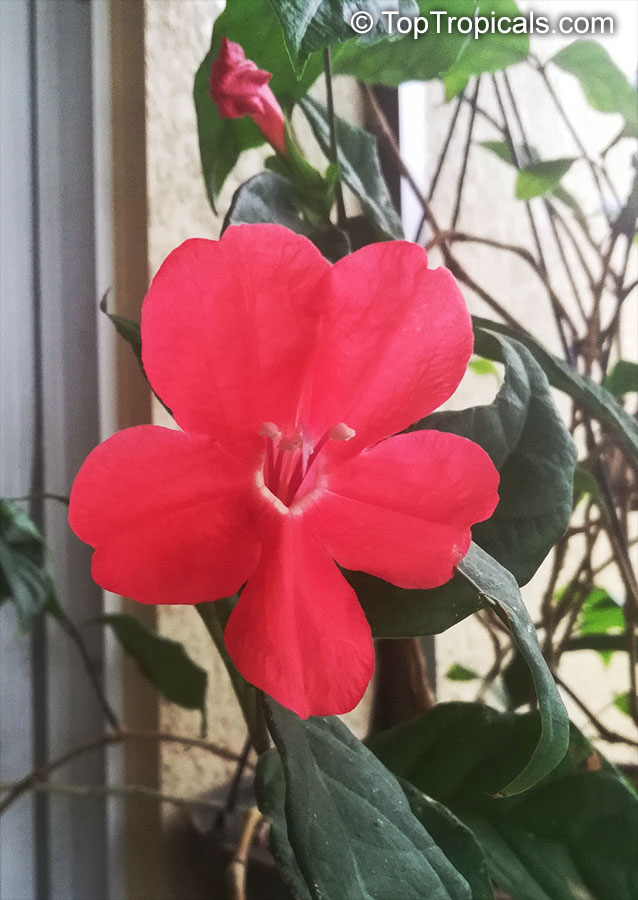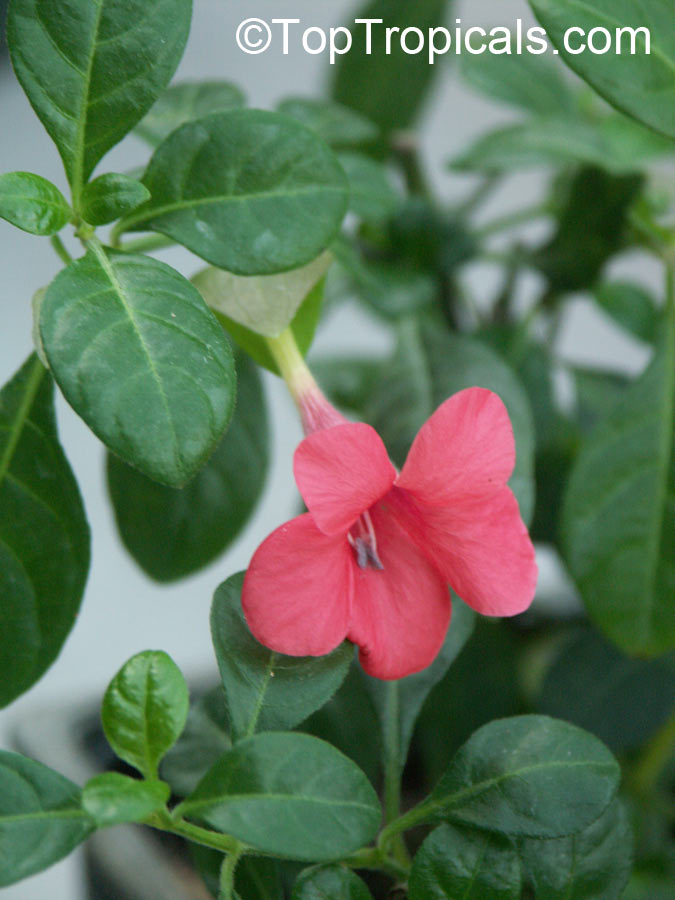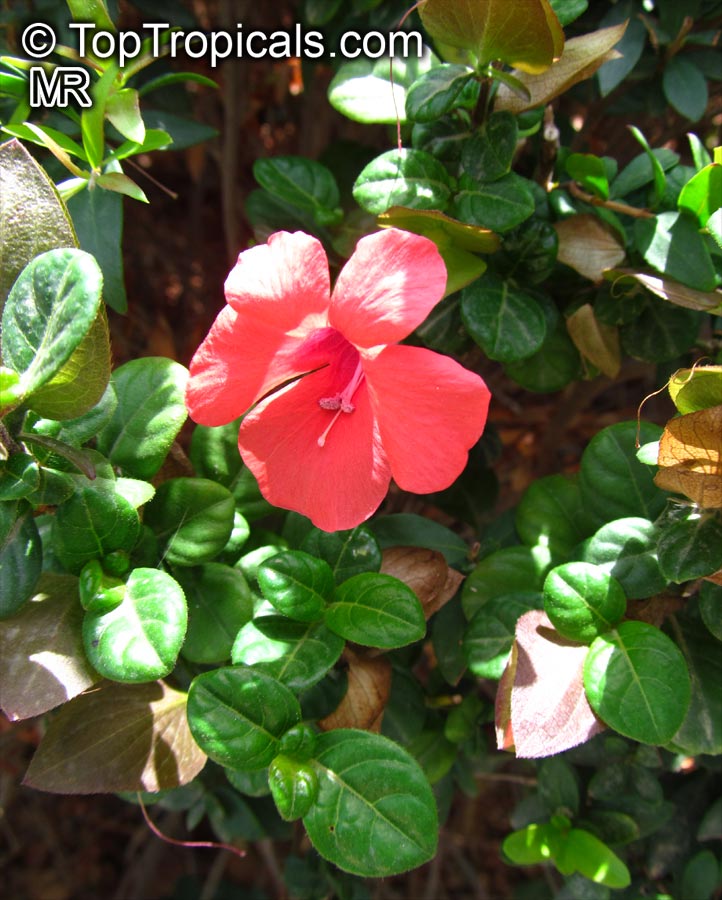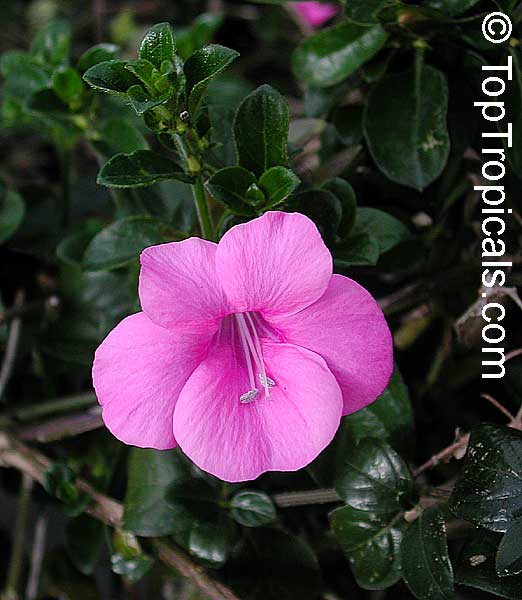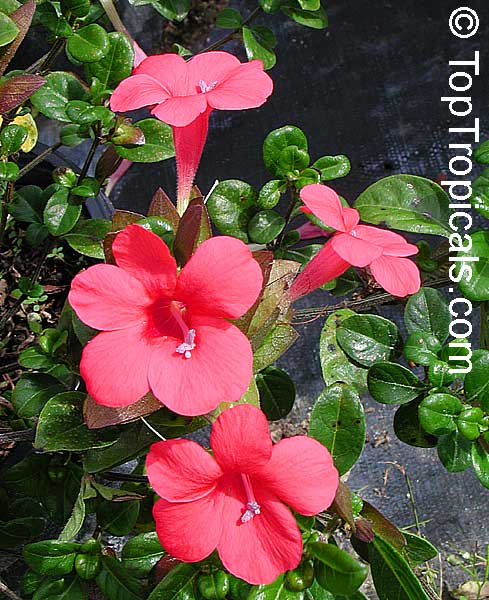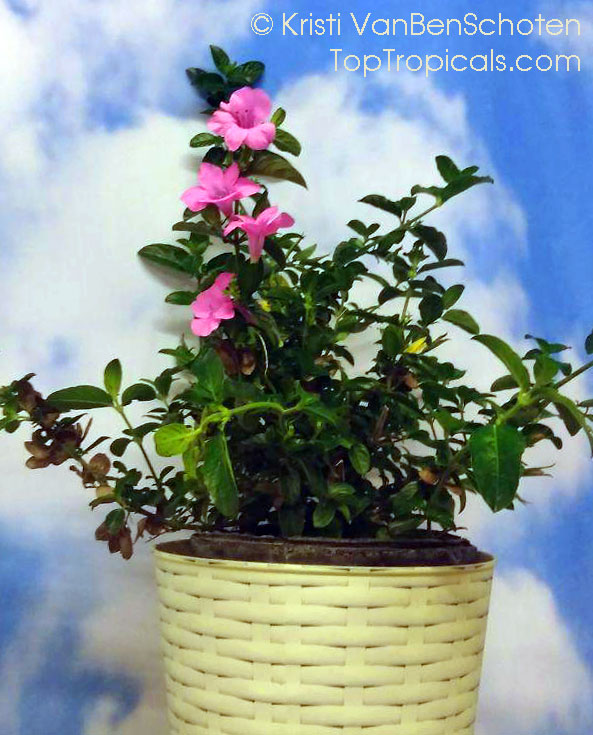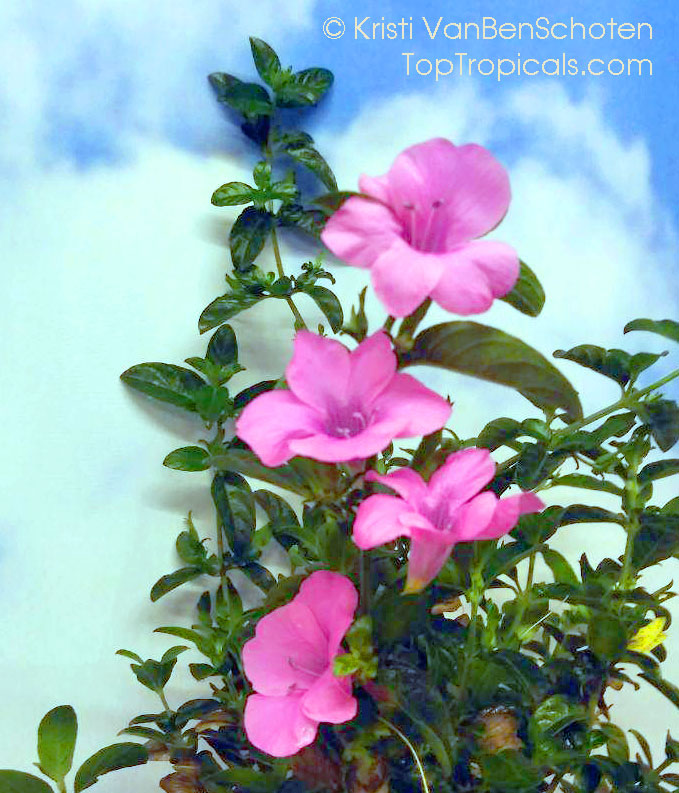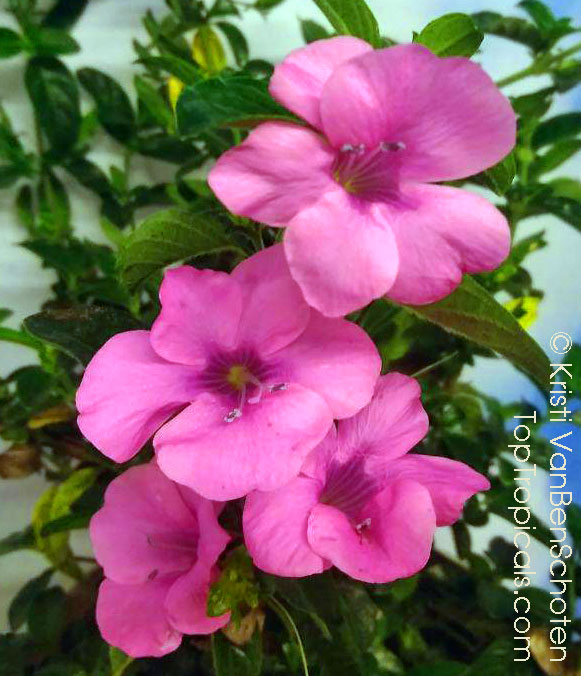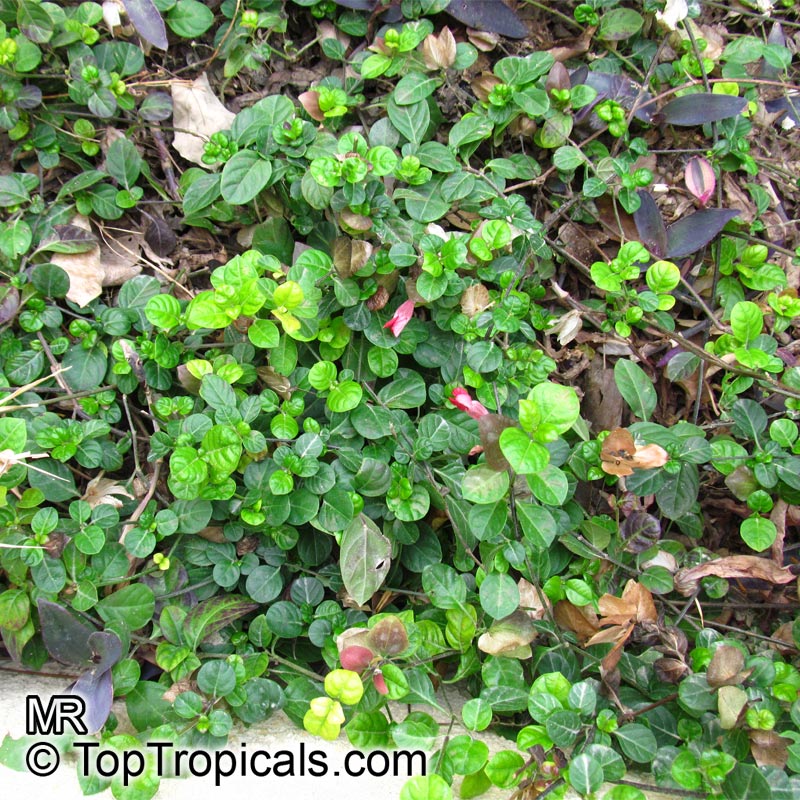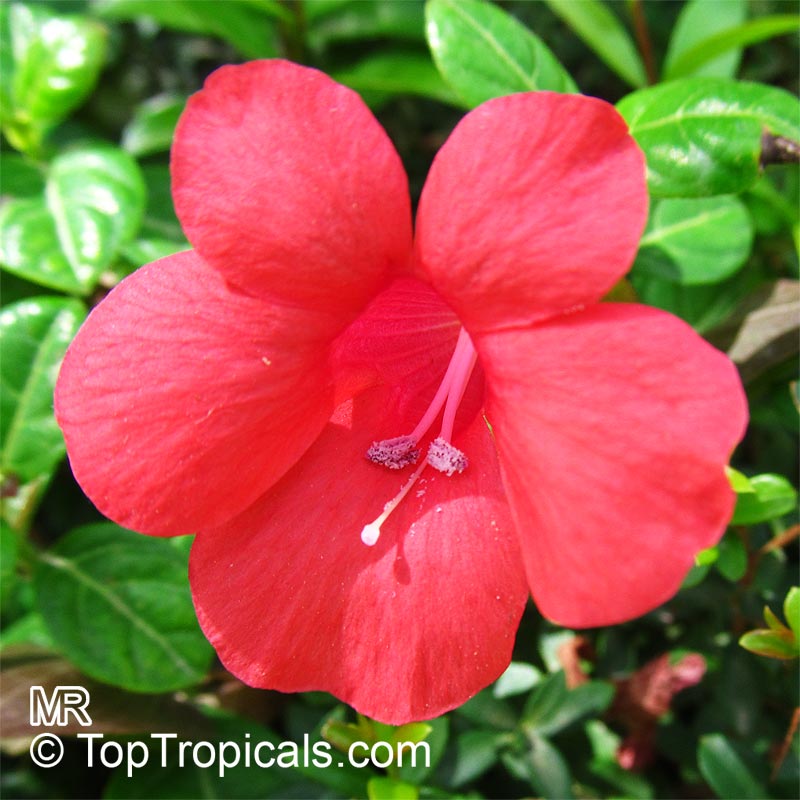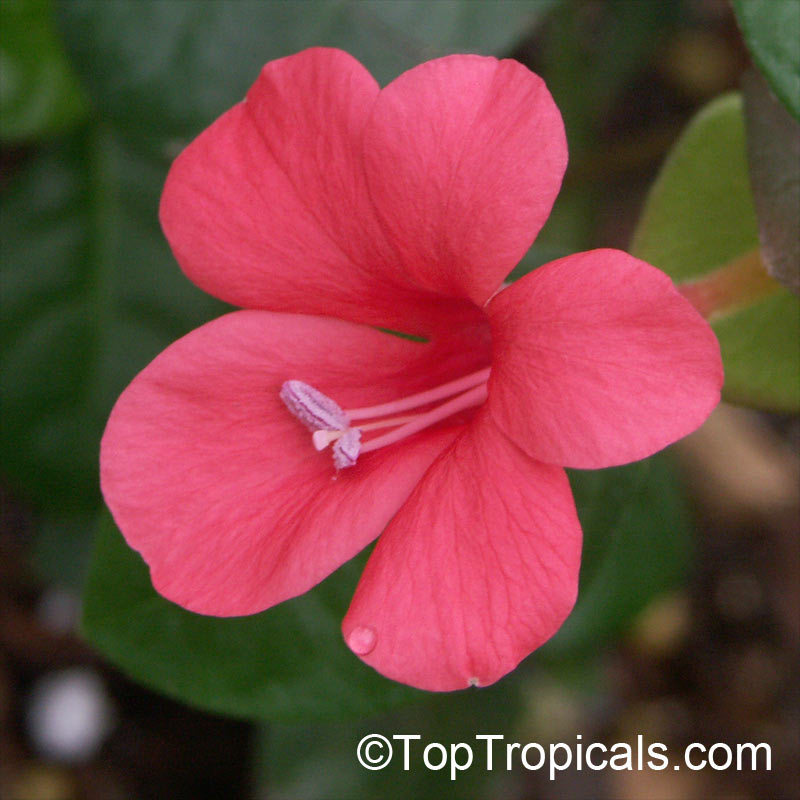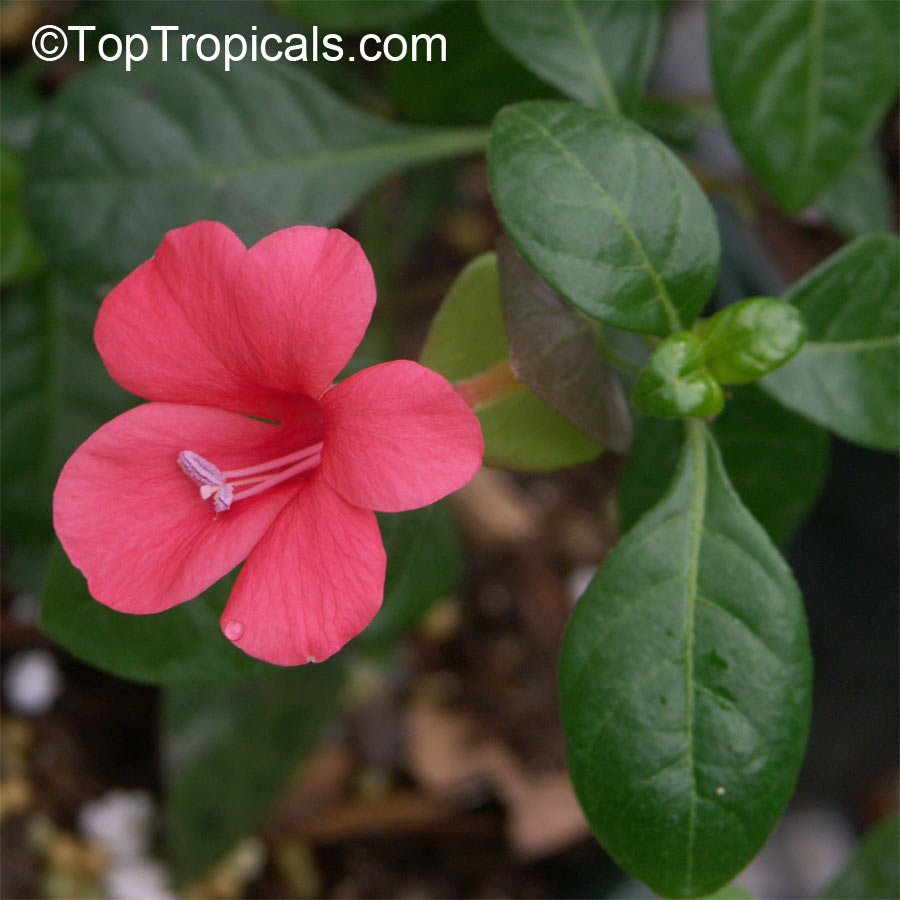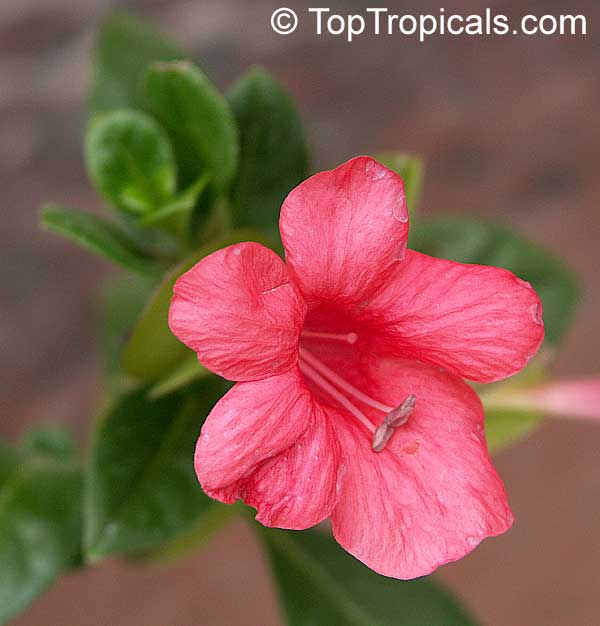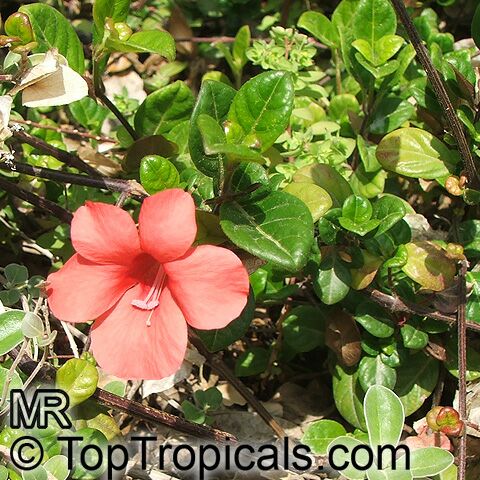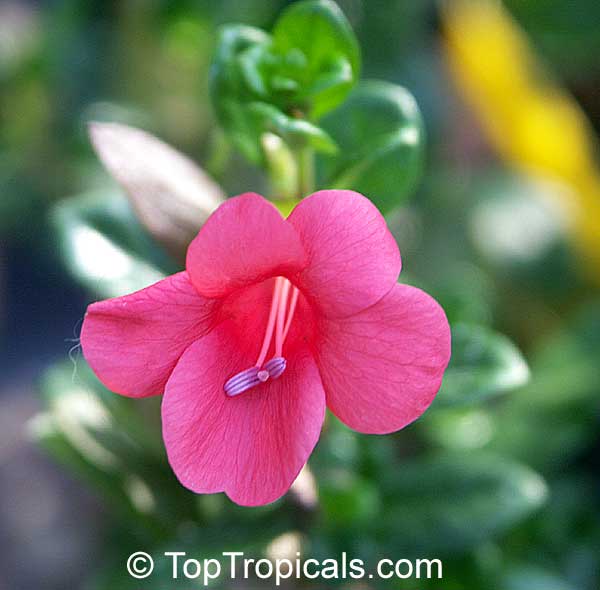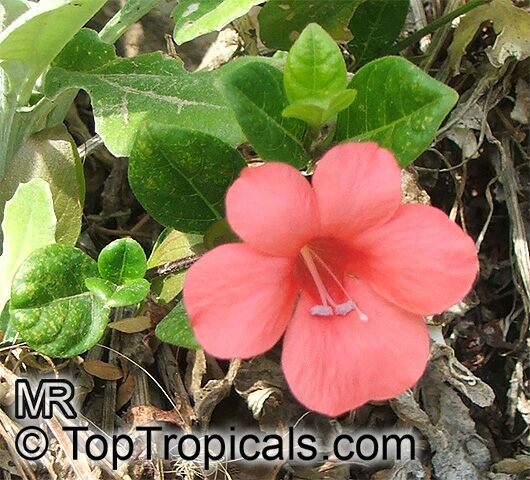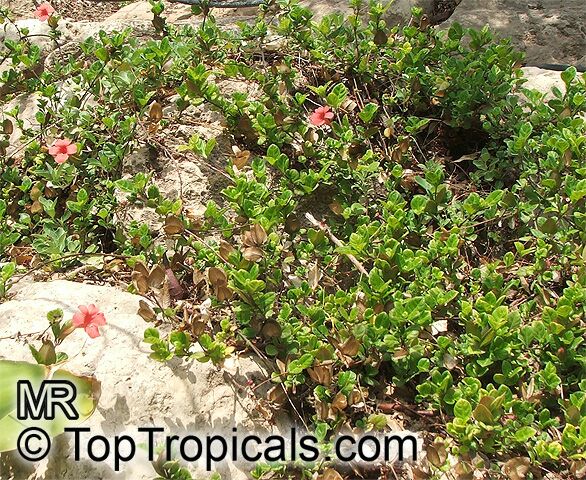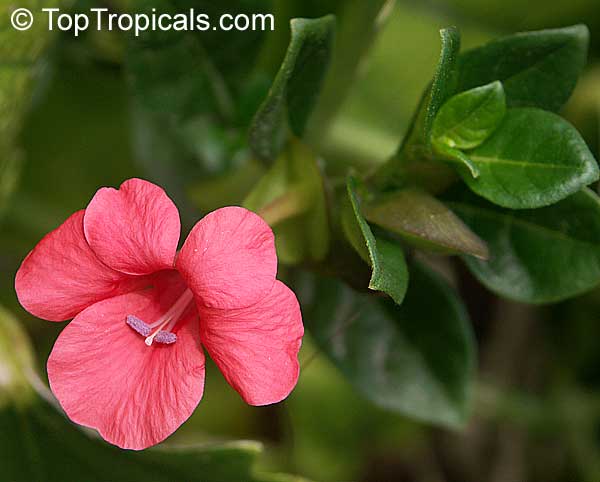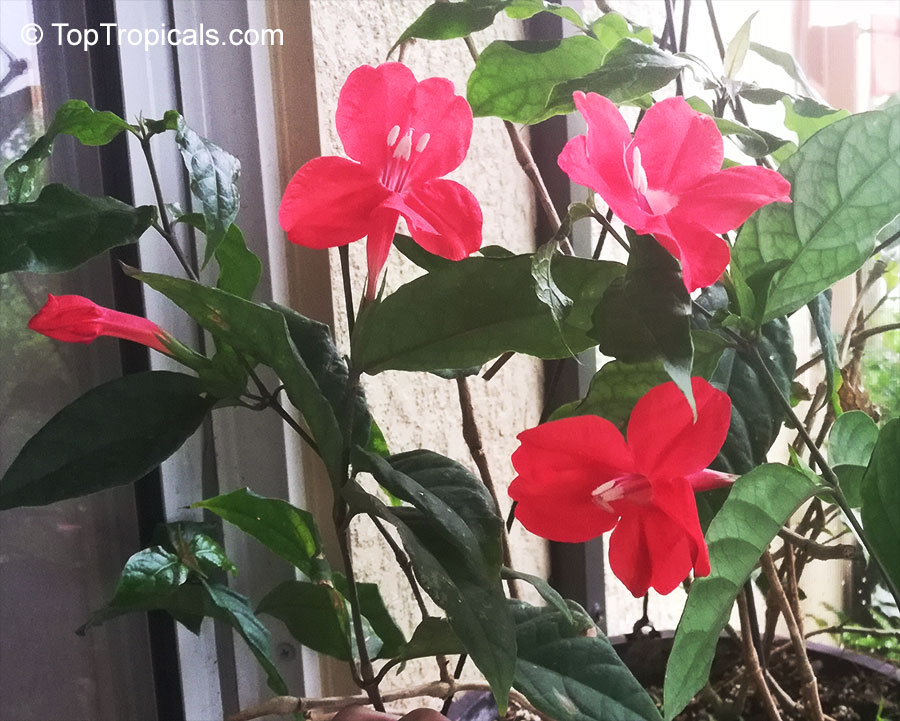Invasive plant - Search results
Top Tropicals Plant Encyclopedia
| Number of plants found: 91 | Next | 
|
Go to page: | 1 | 2 | 3 | 4 | 5 | Last |
Botanical name: Ageratum conyzoides
Common names: Mexican Ageratum, Yoat Weed
Family: Asteraceae
Origin: Central America , Caribbean









The Ageratum is an annual herb that grows to a height of around two feet and produces clusters of small, pretty flowers along its hairy stems. In some countries, it is classed as a weed which is hard to control. In traditional medicine systems in areas where Ageratum grows continuously, it is widely used. In Brazil, an infusion of its leaves or the entire plant is employed to treat colic, colds, fevers, diarrhea, rheumatism and spasms, as well as serving as a tonic. It is also recommended for the treatment of burns and wounds. In countries of Latin and South America, it is utilized for its antibacterial properties to treat infectious conditions and bacterial infections. In Africa, it is employed for fever, rheumatism, headache, pneumonia, wounds, burns and colic.
Ageratum is native to Central America and the Caribbean and can be grown in USDA Zone 9-11, either outdoors or indoors in cooler climates. It grows best in rich, moist soil, with regular watering. Its colorful blooms, which come in shades of pink, white and off-white, will attract butterflies and hummingbirds. The flowering season of Ageratum is usually all summer and the shrub often self-seeds depending on the climate.
To keep Ageratum healthy, the soil should be kept moist but not soggy. Deadhead the spent flowers and avoid overwatering to prevent root rot. If planting in a pot, it is best to first use a potting soil specifically formulated for containers, and then cover with 1-2 inches of a moisture-retaining material such as straw or bark. To encourage blooming, cut the plant back after flowering.
While Ageratum has a place in traditional medicine systems, it is believed to be invasive in parts of the United States. Therefore, caution should be used when planting and spreading to wild, natural areas should be avoided to prevent ecological damage.
Botanical name: Alstroemeria psittacina
Common names: Parrotlily, Parrot Flower, Red Parrot Beak, New Zealand Christmas Bell
Family: Alstroemeriaceae
Origin: northern Brazil









Parrotlily is a small, evergreen to sparsely deciduous shrub, usually 2-5 ft tall and 3-4 ft wide. A woody perennial that is grown commercially as a root ball plant and is known for its bright unusual color and as a long blooming perennials. Parrotlily loves regular water, when established tolerates more moderate water. In cold regions, grow parrotlily in a pot and bring it in during winter months to prevent it from freezing. It should be grown in USDA Zones 7 -10 and is mature cold hardy in temperatures at least to the lower 30s F for a short time.
Parrotlily is attractive to bees and butterflies and hummingbirds, making it an ideal plant to attract pollinators to the garden. The unusual color and long blooming season of these flowers make them popular in cut flower arrangements. Plantings of parrotlily in mass can be quite striking.
When growing in containers, as houseplants, or in colder climates, make sure to provide containers that are 18 to 24 inches in diameter with adequate drainage. The parrotlily prefers slightly acidic, fertile soil and full sun. Keep the soil evenly moist and water the plant from above to prevent water from getting into the center of the plant and rotting the root system. Keep the soil temperature warm, but not hot. Add a layer of mulch to help keep the soil moist and regulate temperature during the colder months. Fertilize parrotlilies, depending on the soil pH, once or twice a year with a slow- release granular fertilizer. Prune any dead or damaged branches anytime and always deadhead spent flowers to encourage new blooms.
Botanical name: Amorpha fruticosa
Common name: Desert False Indigo
Family: Fabaceae
Subfamily: Faboideae
Origin: North America










Desert Indigo is great for a butterfly garden.
Botanical name: Antigonon leptopus
Common names: Mexican Coral Vine, Coral Creeper, Honolulu Creeper, Corallita, Chinese Love Vine
Family: Polygonaceae
Origin: Mexico, Central America










Antigonon leptopus is an attractive ornamental plant that easily climbs with its tendrils, over arbors, walls, or tree branches to a height of up to 40 feet. The succulent vine or creeper native to Mexico and Central America produces an abundance of small, lantern-shaped flowers in shades of white, off-white and pink that attract butterflies and hummingbirds. It has very dense glossy green foliage, which is perfect for use as a ground cover or screening plants.
Growing Antigonon leptopus requires ground that is well-drained, slightly acidic and moisture retentive. The plant prefers full sun to semi-shade, and thrives in hot, dry climates. When planting in cold areas, it is best to keep the plant in a pot and bring it indoors during the cold season. The plant requires regular watering and dormant season irrigation to ensure continued growth. However, it does not favour very wet soil and there should be plenty of air circulating around its roots. To ensure bright and frequent blooms, it is best to avoid excess fertilizer, as this can cause excessive vegetative growth which suppresses flowering.
Antigonon leptopus is also known to be a tough and resilient plant, able to withstand even salty, seaside environments and mature plants can survive short periods of cold temperatures down to 30s F. An important point to note is that the Mexican Coral Vine is somewhat invasive, so it is worth keeping an eye on to make sure it does not take over other parts of the garden! Overall, with adequate light and the right moisture levels, Antigonon leptopus can be a wonderful addition to any garden.
Recommended Fertilizer: SUNSHINE Megaflor - Bloom Nutrition Booster
Botanical name: Ardisia elliptica
Common name: Shoebutton Ardisia
Family: Primulaceae (Formerly:Myrsinaceae)
Origin: Southeast Asia







Ornamental leathery leaves and pretty pink flowers. Small size bush, this plant is very easy to grow, great for beginners as well as indoor culture. It takes low light with no problem, and needs very little if any care. Ardisias are very popular house plants.
Botanical names: Argyreia nervosa, Argyreia speciosa
Common names: Elephant creeper; Woolly Morning Glory, Hawaiian Baby Woodrose
Family: Convolvulaceae
Origin: India










A native of eastern India and Bangladesh, this vigorous twiner will grow 30 ft (9 m) or more into the treetops, but can be trained over a post or stump and kept trimmed to a moundlike form. A dense white down covers both young stems and leaf undersides. The leaves are ovate-cordate, to 1 foot across, white tomentose beneath with lateral veins conspicuous on the undersides. Tight clusters of trumpet-shaped bright pink flowers about 2 in (5 cm) across on pedicels to 6 inches long appear among the foliage in spring and summer. In a tropical climate cultivation is simple, the plants making very vigorous growth in a sunny position in moist soil. In cooler climates they can be grown in a sunny conservatory, but due to their rampant growth will need frequent cutting back. Propagate from seed or cuttings. Used medicinally in India. The roots and seeds of Elephant Creeper have been used as a support of the nervous system, a geriatric tonic and mild aphrodisiac. The whole plant is reported to have purifying properties. It is also taken to help maintain healthy joints.
Botanical name: Aristolochia gigantea
Common names: Calico Flower, Giant Pelican Flower
Family: Aristolochiaceae
Origin: Brazil, Mexico, Panama









The Aristolochia gigantea will inspire a sense of marvel to anyone who gazes upon it. This truly spectacular blossom produces a pouch that in some cultivars is almost 2 feet long and more than a foot across. Ivory veins network across a burgundy velvet background as the flower unfurls. Heart-shaped, light green leaves, about 6 inches in length, adorn this easy-to-grow vine. The plant blooms at a young age and grows in full sun or partial shade.
In some sources, Aristolochia gigantea is considered as Aristolochia grandiflora var. Hookeri. The cultivation of Aristolochias is undemanding. Sun lovers that appreciate some shade in hotter inland areas, they adapt to any soil that drains well. Any pruning necessary to contain or shape the plants should be done in late winter or early spring. Cultivation is easy, and growth can be tamed. Papery capsule containing many seeds.
A. gigantea var. Brasiliensis has even larger lemon-scented flowers and exhibits an elaborate pattern of white and mottled reddish brown. Since it is not a vigorous vine, it can easily be trained on a stake, trellis or even a hanging basket.
The Aristolochia gigantea will inspire a sense of marvel to anyone who gazes upon it. This truly spectacular blossom produces a pouch that in some cultivars is almost 2 feet long and more than a foot across. Ivory veins network across a burgundy velvet background as the flower unfurls. Heart-shaped, light green leaves, about 6 inches in length, adorn this easy-to-grow vine. The plant blooms at a young age and grows in full sun or partial shade.
In some sources, Aristolochia gigantea is considered as Aristolochia grandiflora var. Hookeri. The cultivation of Aristolochias is undemanding. Sun lovers that appreciate some shade in hotter inland areas, they adapt to any soil that drains well. Any pruning necessary to contain or shape the plants should be done in late winter or early spring. Cultivation is easy, and growth can be tamed.
Recommended Fertilizer: SUNSHINE Megaflor - Bloom Nutrition Booster
Botanical names: Aristolochia littoralis, Aristolochia elegans
Common names: Elegant Dutchmans Pipe, Calico Flower
Family: Aristolochiaceae
Origin: Brazil








This vine does best in full sun to semi-shade areas, but is able to tolerate light shade. It prefers moderate water during the growing season and drier periods during dormancy, but will become drought tolerant with maturity. Plant in well-drained soil and feed with general fertilizer in the spring. Prune to shape as desired.
The name is derived from the Greek aristos, meaning best, and lochia, meaning delivery, because it was valued in child birthing and the resemblance of the shape of the flower as a human fetus in the womb.
It grows well in USDA Zones 9-11. For cold regions, it can be grown in a pot. The vines are heavy and require strong support. Keep in a bright, warm spot indoors for winter and move it outdoors in summer when the threat of frost is gone. Water as necessary, keeping the soil slightly moist, but not soggy. Move the pot to a sheltered location in autumn before the cold weather sets in, and bring it back indoors if temperatures drop below freezing for more than a short time.
Aristolochia littoralis is an attractive plant, with its white and off-white flowers, tinged with red or crimson, and large yellowish-green pipe-like calyx. The blooms are also a favorite of butterflies and hummingbirds. This plant is butterfly larval plant. This ornamental vine is cultivated in Hawaii and other tropical areas for its colorful and unique pipe shaped flowers that are usually pollinated by flies which are attracted to the carrion-like odor and to the purple and brown color of the flowers. The striking foliage and flowers add interest to any garden. Though considered an invasive species in some areas, in more temperate regions this plant is a great addition to the garden.
Recommended Fertilizer: SUNSHINE Megaflor - Bloom Nutrition Booster
Botanical names: Aristolochia ringens, Aristolochia galeata
Common name: Dutchman's Pipe
Family: Aristolochiaceae
Origin: Brazil, Mexico, Panama









Distinctive yet unusual, this great vine produces pipe-like flowers netted purple and brown it's leaves are light green and heart shaped. A spectacular show when in bloom! Does tend to have a very strange odor from the flowers. Very showy! Cream and maroon. Papery capsule containing many seeds.
Botanical names: Barleria repens, Barleria galpinii
Common name: Small Bush Violet
Family: Acanthaceae
Origin: tropical Africa










It usually forms a rounded to spreading bushy shrub, 2 ft high by 3 ft wide, but sometimes also climbs/leans into nearby trees and shrubs (up to 6 ft!). New branches tend to root as they touch ground, so this plant can quickly increase its territory if not kept under surveillance. Evergreen, it has soft, shiny, dark green leaves. Flowers are fairly large, and are a deep purple-mauve or pink-red, appearing from late spring to autumn. This plant is easily propagated from cuttings. Always provide good, light, well-drained soil and plenty of compost and other organic material. Water well in summer, but much less in winter. Pest-free and fairly frost-tolerant, it can take sun or light shade.
| Next |  |
Use link to repeat this search:
https://toptropicals.com/cgi-bin/garden_catalog/cat.cgi?search_op=and&keyword_op=and&language=e&number=10&no_change_lang=1
&v1=inv&user=tt&sale=1&first=0
